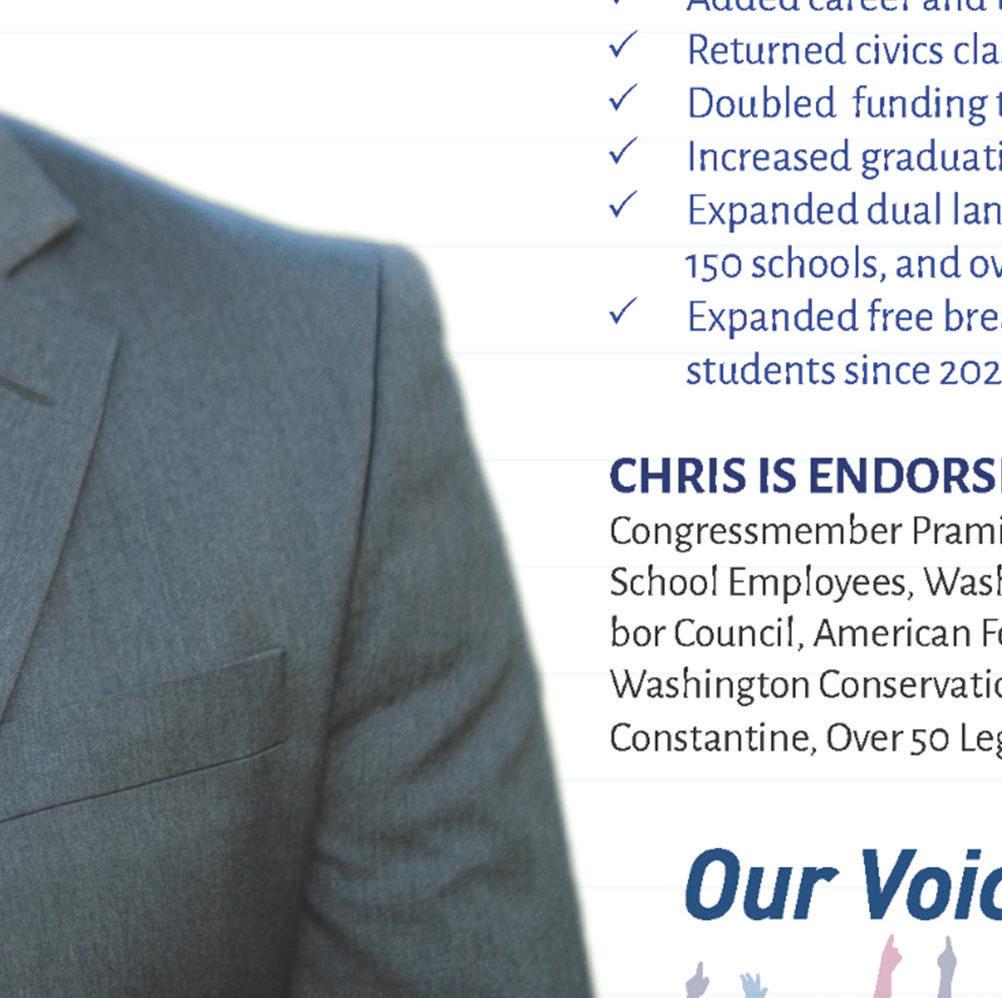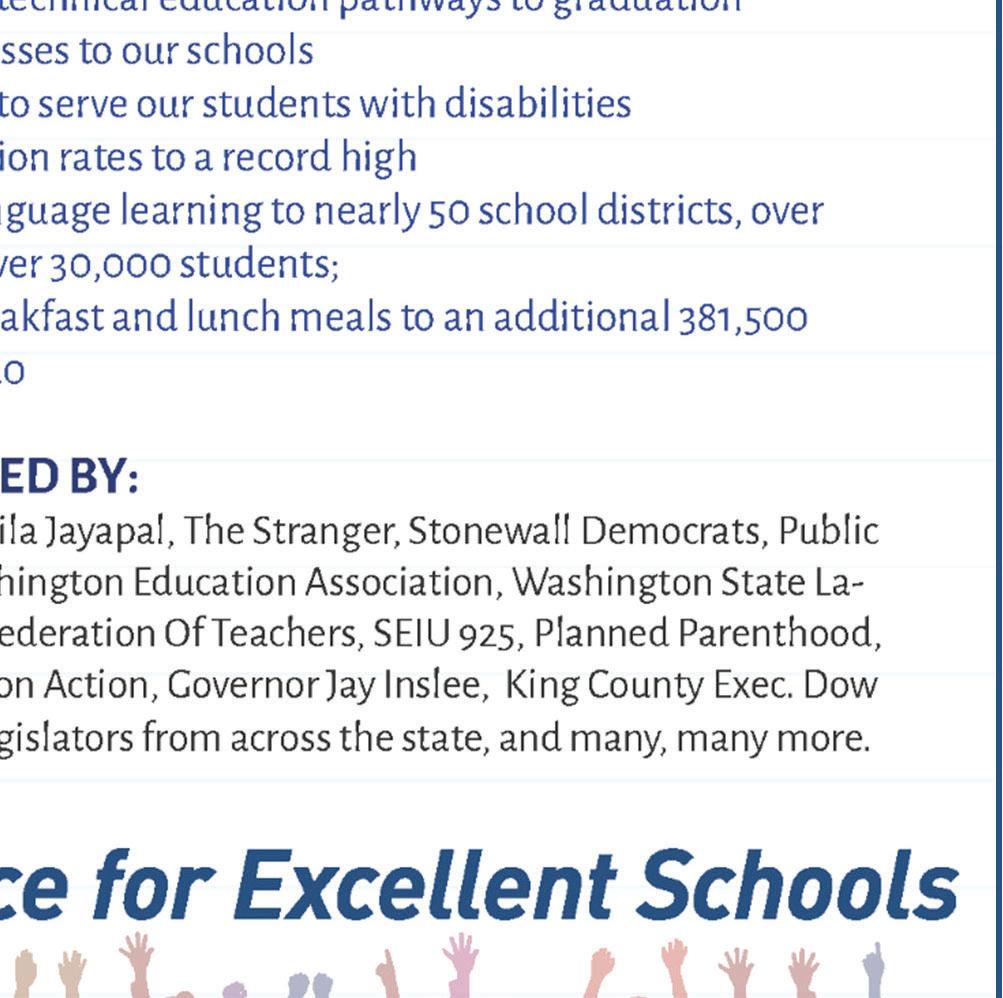






























































































































































































































































































































































As the third-oldest LGBTQIA+ newspaper in the United States, the Seattle Gay News (SGN) has been a vital independent source of news andentertainment for Seattle and the Pacific Northwest since 1974.



As we celebrate our 50th anniversary, we need your support to continue our mission. Your contribution will ensure that SGN remains a beacon of truth and a virtual gathering place for community dialogue. Support us printing and providing a platform for LGBTQIA+ voices.
As we celebrate our 50th anniversary, we need your support to continue our mission. Your contribution will ensure that SGN remains a beacon of truth and a virtual gathering place for community dialogue. Support us printing and providing a platform for LGBTQIA+ voices.



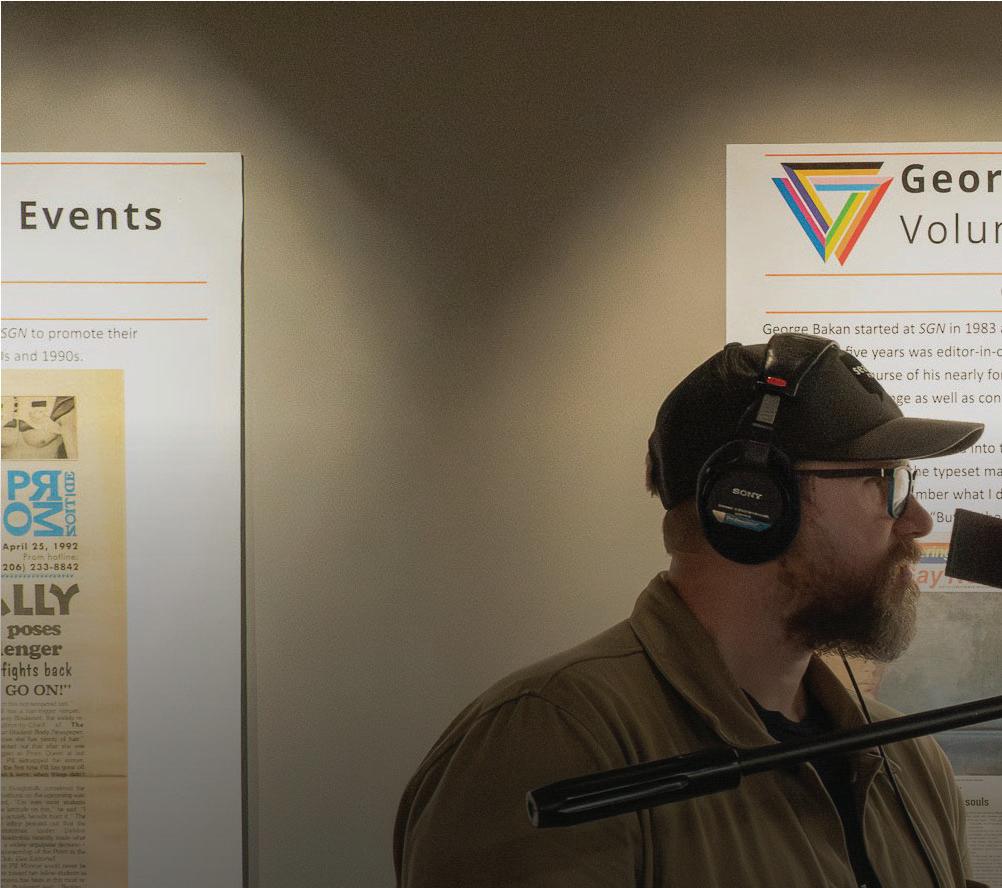

BY KYLIN BROWN

On June 27, dozens of members of the SGN community, including writers from throughout the paper’s history, gathered at the opening reception of the exhibit “Seattle Gay News Celebrates 50 Years!” Seattle Mayor Bruce Harrell spoke about the paper’s rich and impactful history for the region’s LGBTQ+ community over the last five decades, and declared June 27, 2024, Seattle Gay News Day.
The exhibit, which includes largerthan-life displays of archived SGN pages covering historic and oftenoverlooked LGBTQ+ news and events, was created by the University of Washington Libraries and originally displayed at Allen Library in March 2024. Highlights include coverage of the AIDS crisis, including memorials and obituaries; the fight for marriage equality and other civil rights; and the digital preservation of SGN archives.
The SGN now stands as one of the longest-running LGBTQ+ newspapers in the world. While ever-evolving, a constant lifeline of care and maintenance has been its beating heart, including long-time reporter and now owner and publisher Renee Raketty.
“Seattle Gay News Celebrates 50 Years!” is free and open to the public, and will remain on display in the eighth floor gallery of the Seattle Central Library through August 25, 2024.
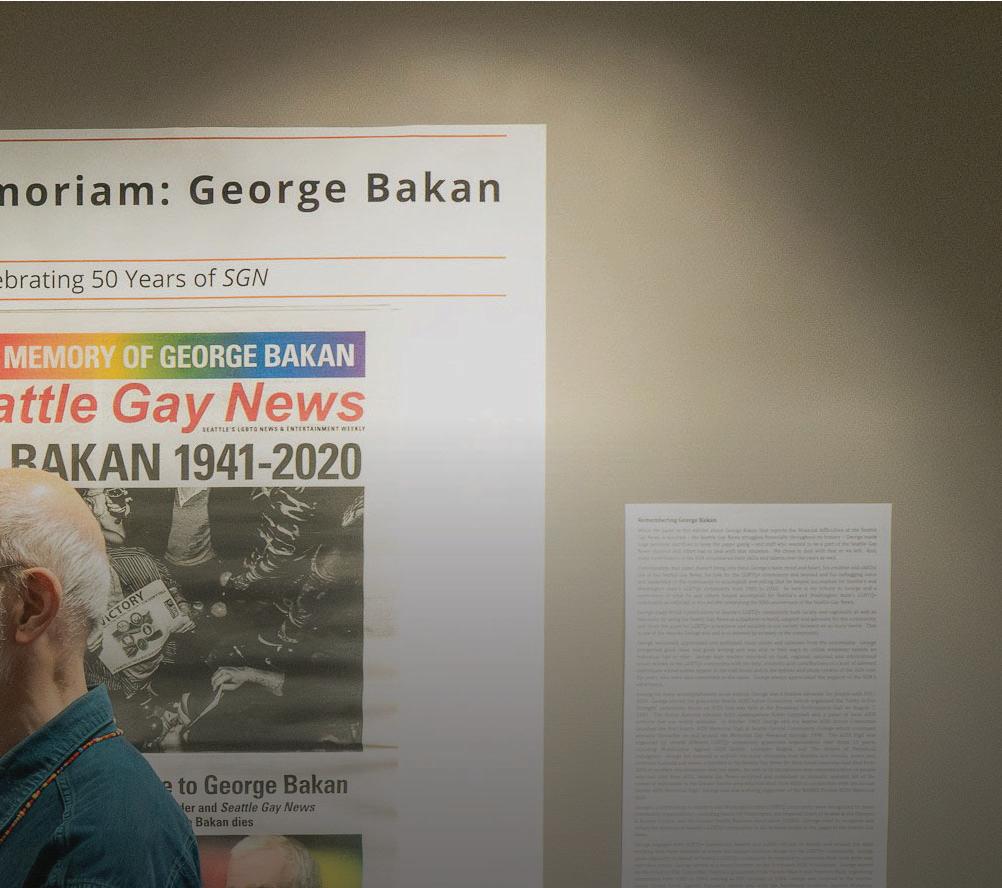








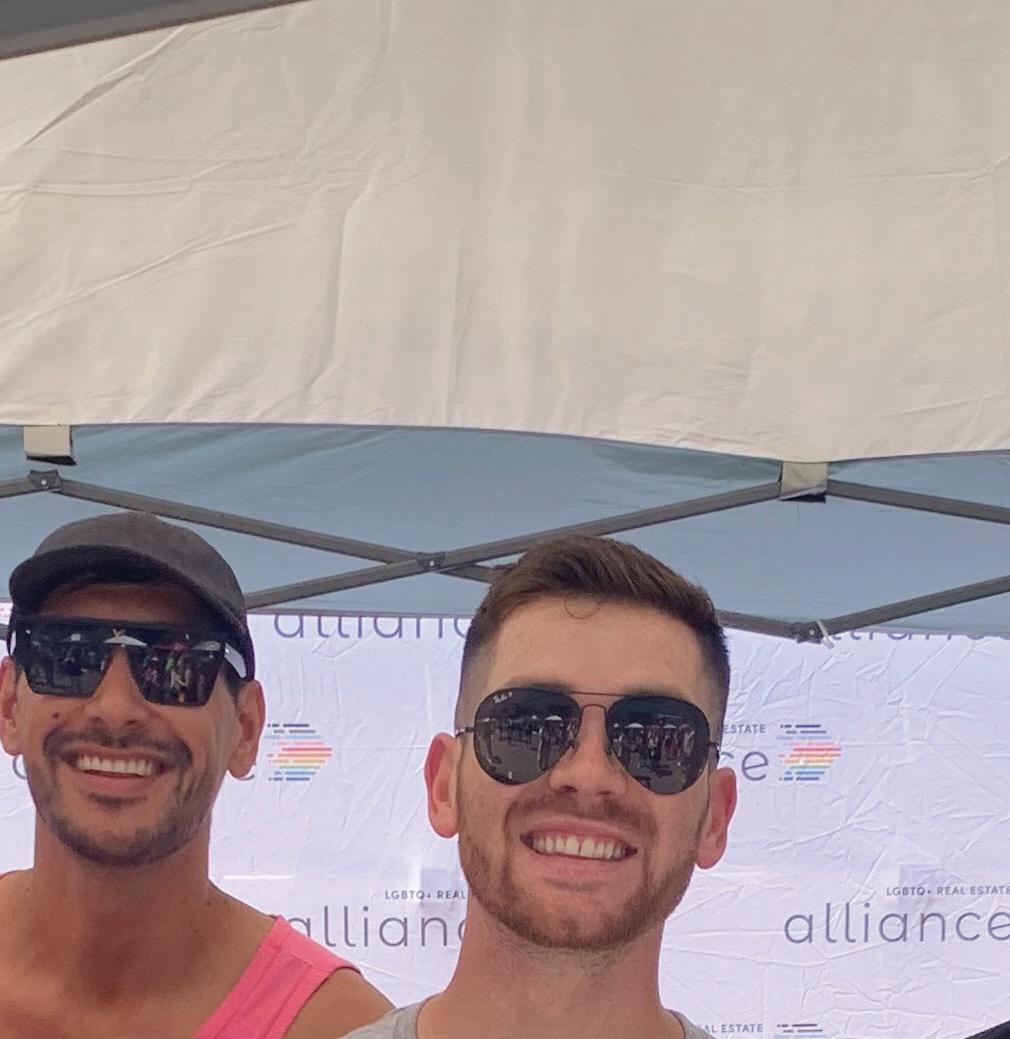


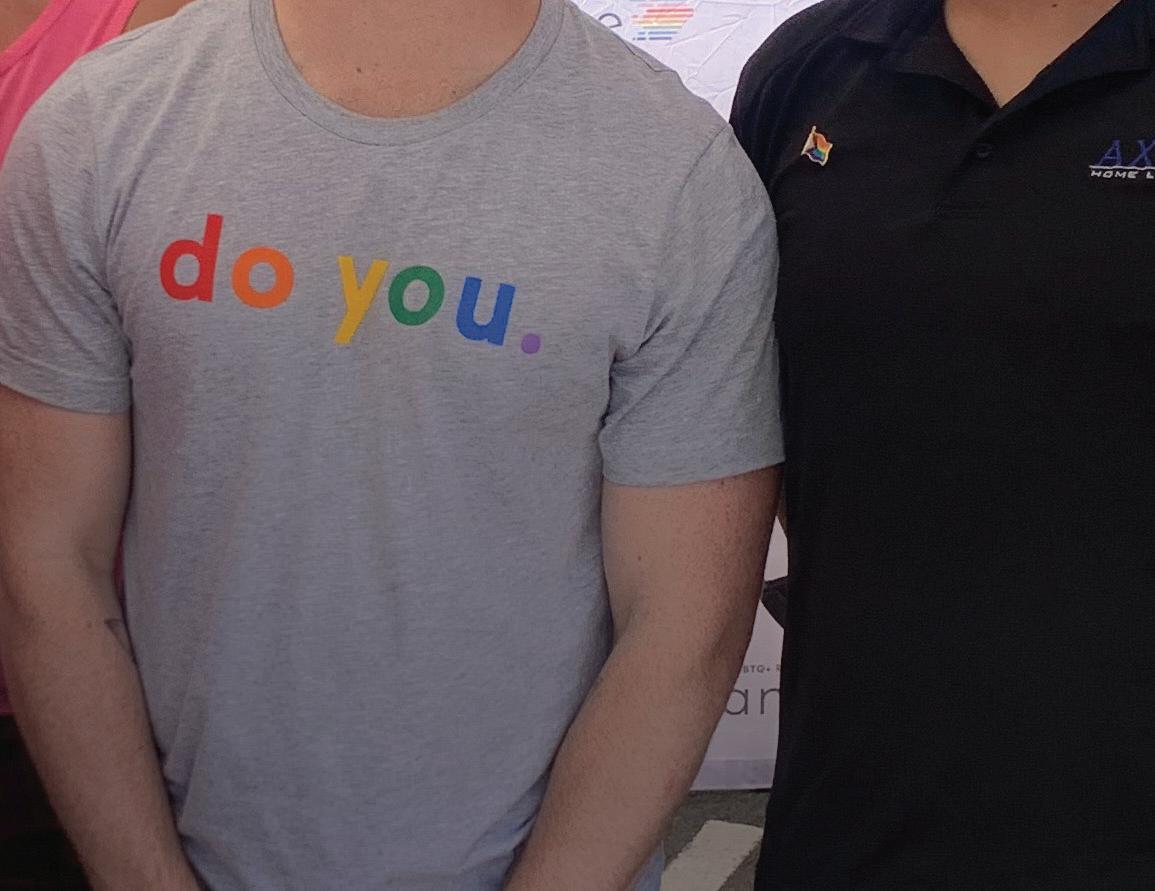
BY MATT NAGLE SGN EDITOR
those voices are heard within the Alliance.”
Even though we are now living in the 21st century, housing discrimination against LGBTQ+ individuals and couples is still legal in many states, and members of our community can be denied a place to live based solely on whom we love.
In Washington state, House Bill 2661 was passed in 2006 to ban discrimination in employment, insurance, and housing on the basis of sexual orientation and gender expression or identity. At the federal level, efforts to ensure housing equality are now underway to add “sexual orientation” and “gender identity” as protected characteristics to the Fair Housing Act., thus providing consistent and explicit nondiscrimination protections for LGBTQ+ people. According to the Human Rights Campaign (https:// www.hrc.org/resources/fair-and-equalhousing-act), the bipartisan Fair and Equal Housing Act was reintroduced in the House of Representatives by Reps. Brad Schneider (D-IL) and Brian Fitzpatrick (R-PA) on June 27, 2023, but has not yet been reintroduced in the Senate.
Even in states with housing protections for LGBTQ+ people, discrimination still happens. But in our state, the Western Washington chapter of the LGBTQ+ Real Estate Alliance is here to help.
Launched as a national nonprofit organization in 2020, the Alliance brings together leading real estate professionals with other members of the LGBTQ+ community and its allies to enhance the work of its members in the industry and to provide consumers with resources to assist in buying, selling, and enjoying their home.
Based in Minnesota, the Alliance has 50 chapters nationwide and a membership exceeding 4,000 brokerages, lenders, title firms, and ancillary service providers. It is noteworthy that 20% of its members are straight allies who want to ensure that they run their businesses ethically.
The Alliance embraces all people, reflecting the fact that the Queer population in America is made up of people from all walks of life.
“It’s all abilities, all races, all ethnicities,” said Spencer Eisman, current president of the Alliance’s Western Washington chapter and a real estate broker at Windermere Abode in Tacoma.
“Our community is so encompassing that we advocate for all marginalized groups getting into homeownership. That’s what we’re about. We really try and make sure all
The Alliance’s national convention is coming up on Sept. 25-27 in Las Vegas. Last year it was held in Houston, with Mayor John Whitmire in attendance.
“They volunteered their whole police force to be there for security, which was amazing,” Eisman said.
Discrimination hits home
Eisman related some statistics to illustrate the breadth of this housing bias: there are 1.2 million same-sex households in the US, there were a record 31,216 complaints regarding fair housing in 2022, and LGBTQ+ people are not protected in 29 states currently.
“With the political climate in certain states, we’re seeing a pretty [large] migration of LGBTQ+ people, especially to areas like Washington, where it is fairly safe and okay to be part of the community,” he said. “We’re seeing a lot of people leaving Texas, Florida, and Indiana, those types of places.”
When asked to talk about clients that have faced prejudice, Eisman said he and his husband themselves have experienced it in Washington state. They were trying to buy a home in a new-construction plat but hit a roadblock when the site representative learned that it would be for a same-sex couple.
“They had gotten wind that it would be two men and then told us that this house was no longer in progress and that it was going to be put on hold for the time being,” Eisman said. “We would drive by occasionally, and that house was in progress. We found out that it sold soon after were trying to buy it.”
Prospective LGBTQ+ buyers face unique considerations when looking for a place to call home. Triggers include putting two male or female names on the purchase and sale agreement. Sometimes someone may not know how to work with a Transgender client or interact with someone who doesn’t use gender pronouns that the seller or agent is used to. These are just a few examples of what can lead to an outright purchase denial — or something more subtle, as happened with Eisman and his husband.
“Unfortunately, I don’t think there are enough checks and balances in place in the real estate industry in general to properly report those things and to get people reprimanded,” Eisman said, noting that a lot of people fear discrimination in housing to the extent that they don’t even think about owning their own home. They just stick to
renting, because they think that’s what they need to do to be safe.”
Education is key
The Alliance as a whole accentuates the importance of education, and this is certainly true for the Western Washington chapter.
“We do a lot of educational classes,” Eisman said. “Part of our chapter structure… is to do four quarterly lunch-and-learns and other education around our community. It doesn’t always have to be about real estate, but we try and make it all-encompassing and open to the public, not just our members.”
At the national level, the Alliance’s education outreach includes a quarterly “Certified Ally Course” given virtually. The next one is on Aug. 8, 2–4 p.m. This is an interactive session to help attendees develop a better understanding of the LGBTQ+ community by providing knowledge on how to work with potential homebuyers and sellers who identify as part Queer. Straightally participants get the opportunity to learn about discrimination issues their LGBTQ+ clients face and thus can foster cultural competency in their profession.
In addition to being president of the Alliance’s Western Washington chapter, Eisman is vice president of the TacomaPierce County Young Professionals Network Board; Tacoma Pierce County Association of Realtors Diversity, Equity, and Inclusion Committee; and Washington REALTORS Diversity, Equity, and Inclusion Committee.
This is how he exercises his educational outreach at a local level, by incorporating advocacy into his professional involvements.
The Western Washington chapter also reaches out beyond real state concerns to support the local LGBTQ+ community.
On Oct. 19, The Point restaurant and bar in Burien will host the chapter’s second annual drag brunch fundraiser for Lambert House. The public is invited to join in and help exceed the $8,000 raised for Lambert House
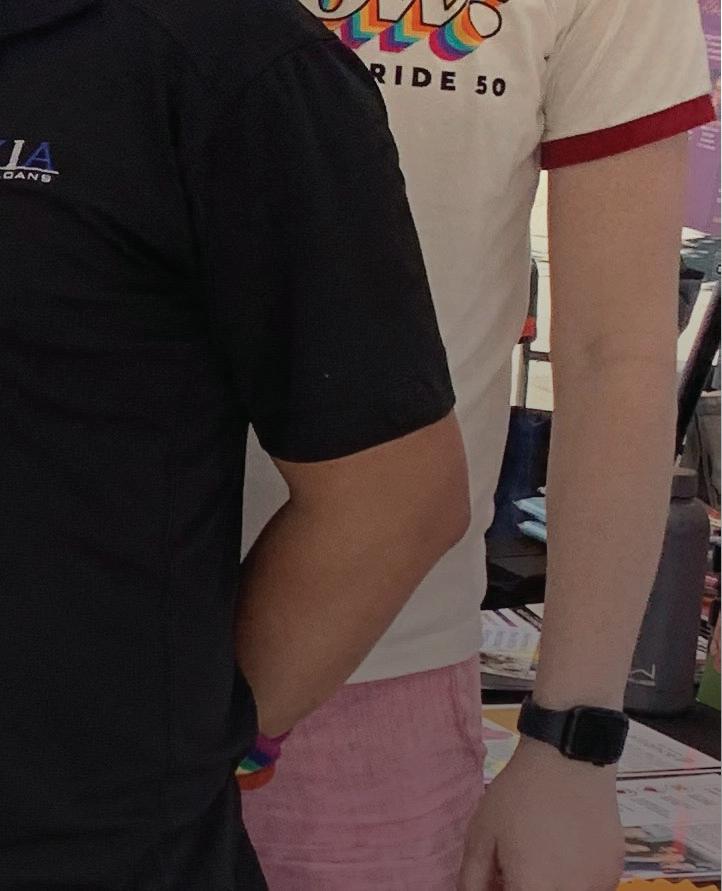
last year.
The Alliance stays involved politically as well, tracking all anti-LGBTQ+ legislation across the country (Eisman said there were 580 anti-LGBTQ+ bills among 45 states in 2023) and where some the funding comes from to support these measures. One funding source is RPAC, the largest trade organization in the world for realtors.
“We’re tracking where all our PAC money goes for candidates,” Eisman said, “and we’ve discovered that a lot of money has gone to anti-LGBTQ+ measures. It’s supposed to be nonpartisan and care only about housing and housing issues, but for me as a realtor, I care way more about my own [Queer] community than I do my realtor community.
“We’re doing what we can to try and push back on those efforts, because it’s more than $3 million at this point that has gone to candidates that are pushing these bills that are directly harmful to anybody in our community, especially young people.”
Celebrating with Pride
Pride season is a prime time for the Western Washington Alliance chapter to get out and share information on its work. The local chapter participated again this year in the Seattle Pride March and the Tacoma Pride Festival, and the national Alliance published a special Pride magazine that can be found at https://realestatealliance.org/ pride-2024.
Eisman said the local chapter is continually growing its membership — not just with real estate professionals like lenders and agents but also with goods and services providers like home cleaners and photographers, for example. Sponsors for the chapter’s events are warmly welcome as well, and the chapter makes sure they receive ample public acknowledgment for their sponsorship.
Learn more about the LGBTQ+ Real Estate Alliance at https://realestatealliance. org and the Western Washington chapter on Instagram at @alliance_westernwa.

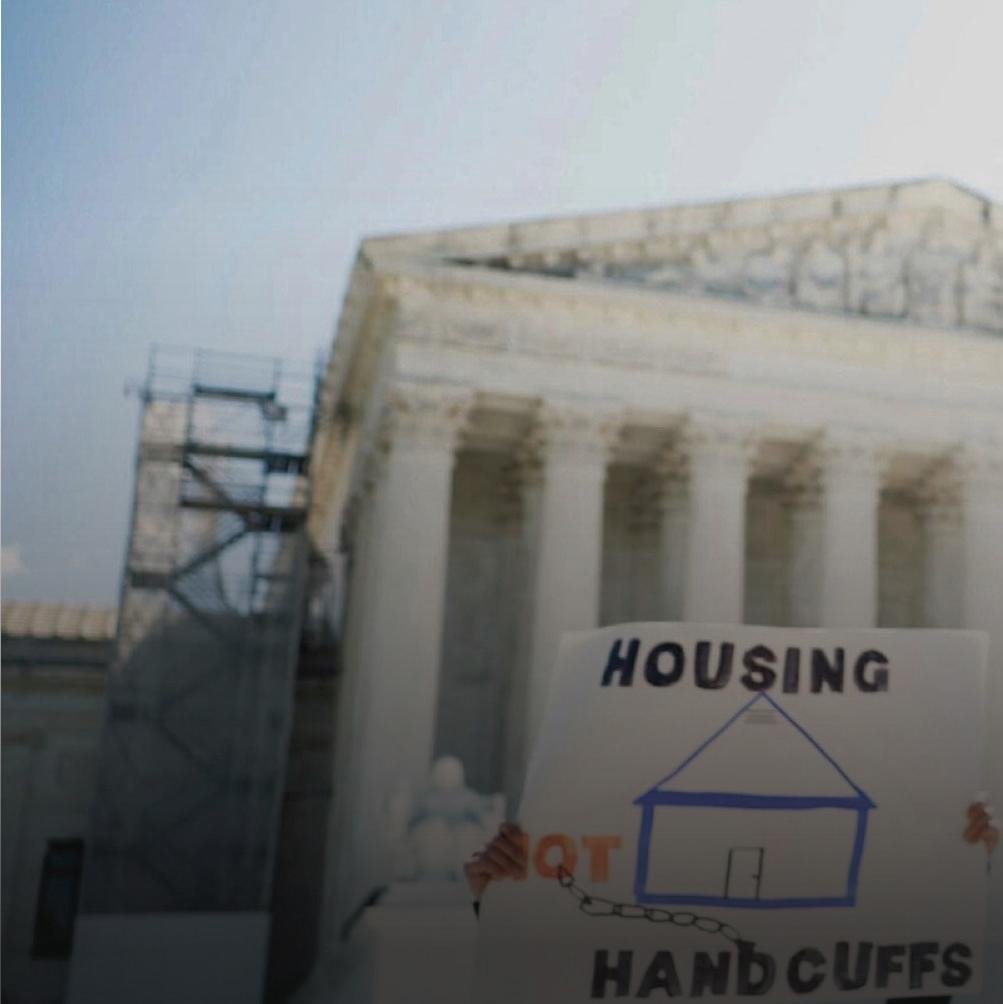
BY HANNAH SAUNDERS


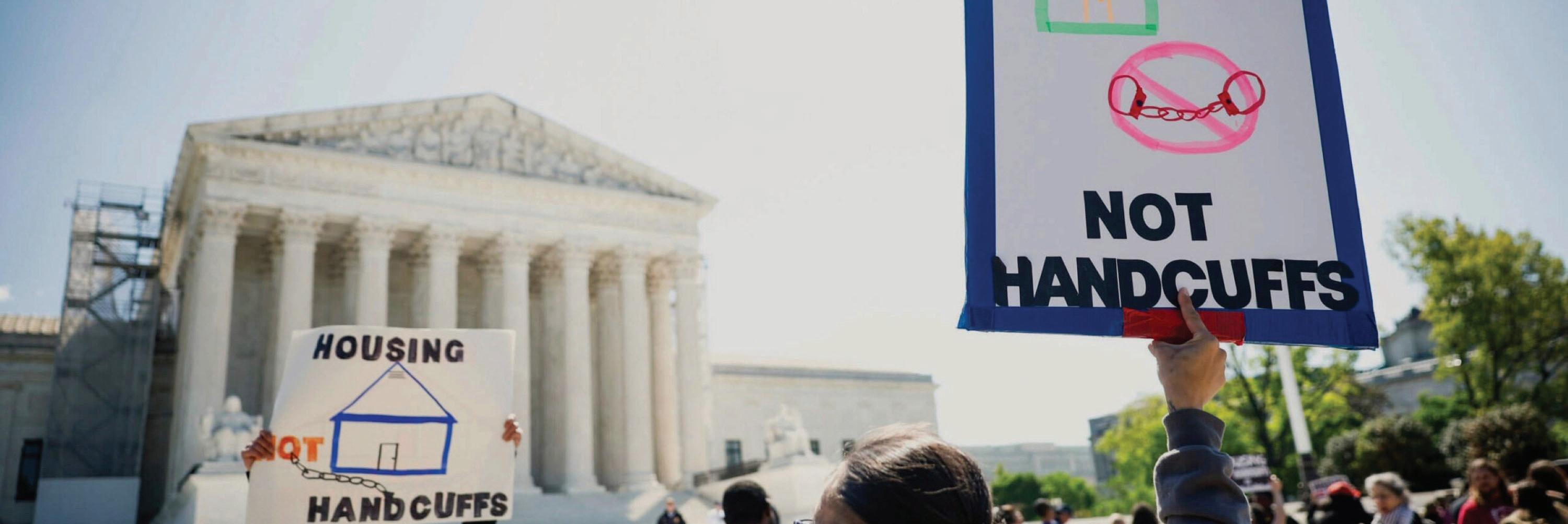
On June 28, the Supreme Court of the United States (SCOTUS) overturned a California-based appeals court ruling that had stated that, in the absence of available shelter space, anti-camping and antisleeping laws are a form of cruel and unusual punishment under the 8th Amendment. Now cities can ban and fine people who are experiencing homelessness for sleeping and camping in public spaces, and even prosecute them for criminal trespass. But housing experts in Seattle tell the SGN that our unhoused neighbors will not be impacted — at least not any more than they already are.
“At a high level, the SCOTUS ruling does not change the City of Seattle’s approach to encampment resolutions,” Callie Craighead, spokesperson for the mayor’s office, told the SGN. The reason Craighead cited was that the city is not seeking to change its multi-department administrative rules, or MDARs, that currently deal with homelessness.
While the SCOTUS decision will not have a direct impact on people experiencing homelessness in Seattle, the MDARs will continue to allow city crews to carry out the “sweeps” that displace unhoused people and trash their belongings.
MDAR 17-01 was established in 2017 to create rules and procedures for addressing homeless encampments on city property. It developed rules for different city departments, like Seattle Public Utilities and Seattle Parks and Recreation, among others, and they all follow a similar pattern: permits are required before setting up “structures” like tents, and camping is disallowed altogether, or only allowed in designated camping areas like park campgrounds.
People in violation of the MDAR 17-01 may face enforcement, which consists of
written or verbal withdrawal of that person’s permission to stay on the property, and the issuance of a citation. Another violation under MDAR is storing or abandoning personal belongings without approval on city property, which has led to the sudden removal and disposal of unhoused people’s goods.
Unified Care Team approach
Craighead forwarded the SGN a statement from the mayor’s office, which commented positively on the city’s approach to regulating encampments.
“Our approach leads with offering shelter and services as part of the encampment resolution process, ensuring people come indoors at the same time as we keep public spaces clean and accessible for everyone. The City’s Unified Care Team closely follows the requirements set out in the MDARs, grounding the City’s encampment resolution work in the compassionate approach we believe in,” reads the statement.
The statement said the Unified Care Team approach is showing positive results; for example, the team reported a 20 percent increase in shelter referrals last year. According to the statement, since May 2022, the number of tents have decreased from 763 to 345, and RVs at encampments have decreased from 426 to 179.
The city has a team that inspects and cleans up unauthorized encampments based on hazards and other unlisted conditions. This team conducts litter pick-ups, a 72-hour site removal, and reduces obstructions and hazards. The city alleges that it provides outreach and offers shelter and storage to those living on sites that are facing a 72-hour removal period. Since January, the team has engaged with 81 unauthorized encampments in Seattle.
Lavender Rights Project continues to provide housing services
Ebo Barton, director of housing services at the Lavender Rights Project, told the SGN sweeps are ongoing.
“That in and of itself severely impacts the homeless population,” Barton said. “A lot of folks are scared, and it [the ruling] also has mobilized our housing staff in order to be prepared for anything that might arise for some of our clients and community members.” However, Barton said that, despite these understandable concerns, the SCOTUS ruling has no immediate impact on residents of Seattle.
Barton added that the Lavender Rights Project is not actively tracking any cities that may instate new bans on camping or public sleeping, but the organization is providing more assistance to those seeking resources.
“From our perspective, Black Transgender people and Black Femmes are among the most vulnerable homeless population,” Barton said. “It’s systemic discrimination and violence, and what this does is increase policing and criminalization with these ordinances, which further our community’s marginalization.”
The US Department of Housing and Development requires an unsheltered pointin-time count every other year to plan for the distribution of federal funds to address homelessness. Experts believe the number arrived at from the point in time count is a drastically undercount of the actual problem.
The King County Regional Homelessness Authority conducted a pointin-time count of unhoused people, both sheltered and unsheltered, in January of this year. The count found that 16,385 people in the county experience homelessness
on any given night, which is a 23 percent increase from 2022. That year, 57 percent of people experiencing homelessness were unsheltered, while 43 percent were sheltered In 2024, the number of unsheltered people experiencing homelessness rose to 6 0 percent, or 9,810 people, while 40 percent or 6,575 unhoused people were sheltered.
The Homelessness Authority’s count data shows that this year, 31 people who were sheltered or unsheltered identified as Transgender men or women, and 163 were Non-Binary.
The Lavender Rights Project offers intersectional legal and social services to Black people and other people of color in gender-diverse and Intersex communities who experience housing insecurity, poverty and gender-based violence. The project also provides free legal services to people in Black and Indigenous communities in Washington, including free direct representation, consultations, and lega l clinics for issues related to civil law.
To break barriers to housing in the community, the Lavender Rights Project is involved in King County’s Health Through Housing initiative. In April 2023, the Lavender Rights Project and the Chief Seattle Club announced that they would open a permanent supportive housing facility in the Capitol Hill neighborhood for QT2BIPOC people.
The Health Through Housing progra m works to repurpose hotels and other buildings to provide immediate supportive housing. The program has 16 locations across seven cities, and it served 911 people last year. The Lavender Rights Project and Chief Seattle Club’s permanent supportive housing facility, known as “The House,” will have 34 units and is set to open in early 2025, Barton said.
BY AUDREY OSCARSON
On June 1, 2024, Washington State University launched the first LGBTQIA+ survey of Washington state. The survey aims to reveal the needs of LGBTQIA+ people living in Washington and aid the Washington LGBTQ Commission in its policy recommendations to the Washington legislature.
Traci Gillig is one of the organizers of the survey and is an assistant professor of communication at Washington State University, and says the survey asks about experiences and characteristics of Washington LGBTQ residents.
“In general, we're asking about the health, safety, economic, and social experiences of LGBTQ+ people in Washington,” Gillig said. “We're also interested in their geographic distribution across the state.”
The survey is open to any Washington resident over eleven years of age who identifies as LGBTQIA+. Responses will be accepted through January 2025. The survey’s creators expect about 10,000 people to respond.

All responses will be kept confidential, and respondents can share their email addresses, which will not be tied to their responses, to enter a prize drawing for a $50 gift card.
The survey aims to reach as many people as possible, and is available i n English, Spanish, and Chinese.
“The survey launched on June 1, 2024 People can participate by accessing the survey link through our social media accounts (@walgbtqsurvey), through the WA LGBTQ Commission website, and through our QR [code], which we've shared at events and through promo materials,” Gillig said. “Additionally, at events such as Pride festivals, we host booths where people can stop by and take the survey on one of our tablets.”
“We’re working hard to reac h LGBTQ+ people across Washington and really appreciate it when people let their LGBTQ+ friends, family, and other contacts know about the survey,” Gillig said.
For more information, visit https://lgbtq. wa.gov/survey.


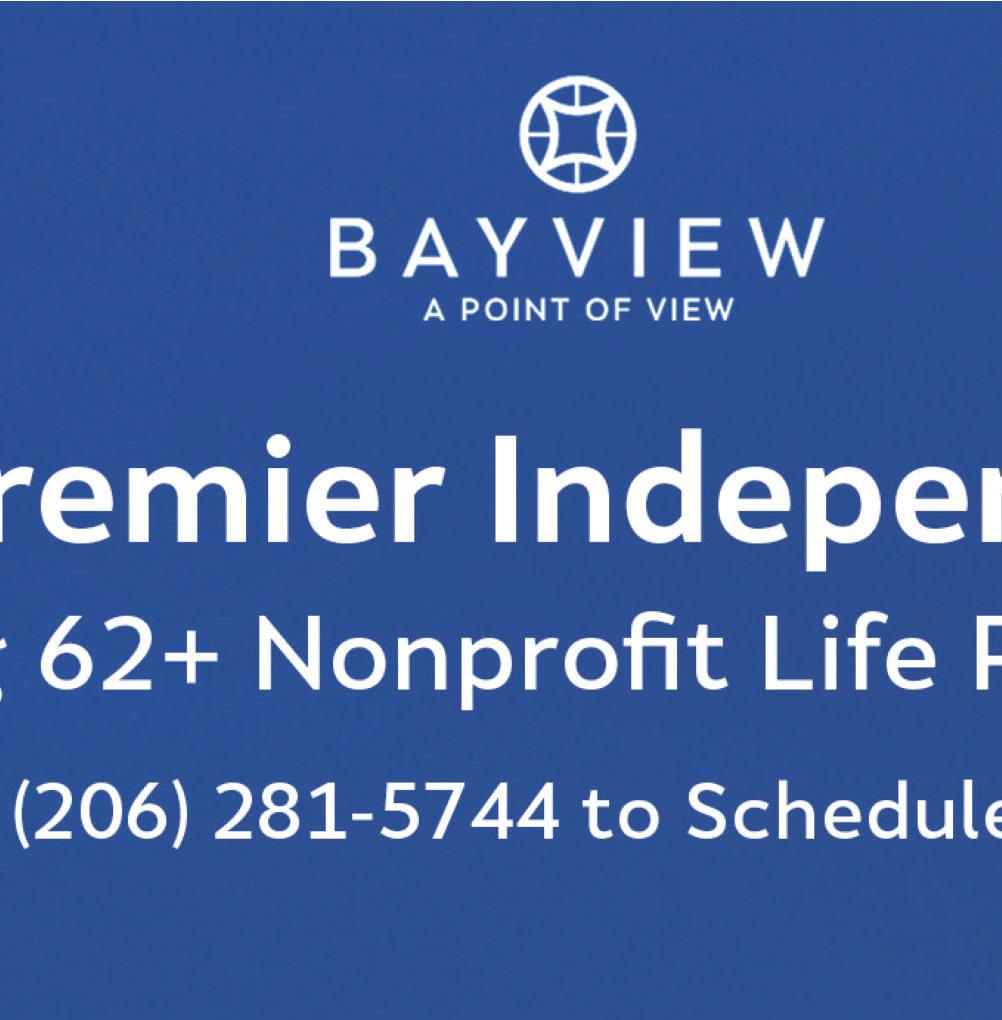






BY HANNAH SAUNDERS
Cities across the country will now be able to implement public sleeping bans, which legal advocates say could essentially criminalize homelessness, following the June 28 Supreme Court ruling that such bans do not violate the Eighth Amendment’s clause concerning “cruel and unusual punishment.”
While Seattle doesn’t currently have a public sleeping ordinance in the works (it relies instead on a patchwork of rules against erecting structures in parks, on sidewalks, and so on), King County has already seen the adoption of Burien’s contentious Ordinance 832 (formerly known as 827), which makes camping on public property between 7 p.m. and 6 a.m. a misdemeanor when shelter space is available. However, the ordinance has not been enforced since November 1, 2023, due to ongoing lawsuits.
While punitive measures like these are now authorized at the federal level and being argued for locally, housing resources organizations continue to be critical avenues of information for unhoused people affected by our region’s ongoing housing crisis. For the LGBTQ+ community, knowing who is safe to talk to and who provides culturally competent information and programming is also key to accessing housing resources.
That’s why Queer Power Alliance and t he Seattle/King County Coalition on Homelessness had partnered with 15 other local organizations to facilitate an LGBTQ+ Housing Resources Fair on Saturday, July 27.
Housing justice
The LGBTQ+ Housing Resources Fair, hosted at the downtown Seattle Central Library, aimed to bring vetted, “LGBTQcompetent organizations directly to the
community,” according to Queer Power Alliance (QPA) Executive Director Taylor Farley. The fair featured housing resources tailored to LGBTQ+ people, who, data shows, faced higher rates of homelessness nationwide than non-LGBTQ+ people.
A 2020 UCLA Williams Institute survey showed that about 17% of Lesbian, Gay, and Bisexual adults and 30% of Transgender adults have experienced homelessness at some point in their lives, compared to just 6% of the non-LGBTQ+ population.
Farley, who played a key role in planning the event, said that invited organizations were asked to bring any resources that would support the LGBTQ+ community in attaining housing justice, which Farley said is the difference between having a temporary place to stay and finding a secure home.
According to Farley, housing justice is multifaceted, especially for LGBTQ+ people. “When you have stabilized housing you have access to hopefully other things. You have [a secure] income, you have healthcare — those are all part of housing,” they said.
“Housing justice is when people feel safe, they feel secure, and especially for LGBTQ folks, [when] they are in stabilized housing where they’re not afraid that they have to be looking over their shoulder because their neighbor or their landlord has a prejudice against them.”
Several organizations at the Housing Resources Fair, such as Peer Washington and Disability Empowerment Center, provide health and wellness services as well as employment resources relating to their housing goals.
Farley said that renters in the LGBTQ+ community, specifically Black and Trans people, face discrimination from landlords
at almost all points of the housing process. For example, just after –– or sometimes during –– an in-person viewing, Black and Trans people are often told that the rental is no longer available, even while it continues to be listed and viewed by other parties.
At the end of an LGBTQ+ tenant’s lease, dramatic rent increases also contribute to destabilized housing by pushing renters out of the places where they have built a strong neighborhood network, said Farley.
“We build community in our neighborhoods,” they said. “That’s part of stabilized housing– creating neighborhoods, looking out for each other, and making sure that we are not discriminated against.”
Connection and solutions
The Tenant Law Project will provide renter-specific information and Be:Seattle is also set to provide resources related to renter’s rights education. On Be:Seattle’s website, a tenant resource portal enables renters to find information like complaint histories for particular landlords and buildings.
The Lavender Rights Project, another organization tabling at the event, serves Black gender-diverse people across King County. Its Wellness Nexus — a comprehensive approach for housing justice by Farley’s definition — consists of a permanent, 32-unit supportive housing facility that is set to open next year, health and community wellness resources and referrals, partnerships with local government agencies, and regional policy advocacy work. The housing facility — nicknamed “The House” — is a joint project with the Chief Seattle Club and King County Health Through Housing.
Also present will be Entre Hermanos,

whose Housing Assistance Program provides rental support targeted for the Latinx population of Washington; and UTOPIA Washington, which is led by and for Queer and Trans Pacific Islanders.
Organizations like these, which offer connection across cultural and intersectional identities, go beyond the basics of health and housing, with the aim of creating lasting solutions at the community level.
According to Farley, the QPA is a small organization that gets its might from the partnerships it maintains. Bringing all these organizations together means that this event was be able to provide direct resources to all the intersections that the LGBTQ+ community exists within, they said. Ideally, it will spur connections and strengthen community as well.
While the consequences of the Supreme Court’s ruling have yet to fall on Seattle directly, Farley said the QPA is “committed to uplifting LGBTQ+ needs, including housing” as they currently stand, while also tracking how these needs are currently evolving.
The organization is currently collecting survey data in South King County in partnership with POCAAN and Entre Hermanos to gain a deeper understanding of what housing, economic, transportation, health, and voting accessibility look like for residents, and it continues to host regular housing-related programming for the LGBTQ+ community.
The QPA’s next quarterly renter’s rights education workshop will be held on August 15, both in person and online.
For more information and social media handles for the Queer Power Alliance, visit https://www.queerpoweralliance.org.
BY KYLIN BROWN
On August 16-18, Pacific Northwest Black Pride will host its seventh annual Black Pride weekend in Seattle. This year’s venue and schedule have yet to be announced, but so far, organizers describe the four-day celebration as “eventful.”
According to the official website, this year’s activities will center around “fostering inclusion and advancing equity within the Black LGBTQIA+ community of the greater Pacific Northwest area.”
This year’s theme, “Embrace, Encourage, and Empower,” has been planned to align directly with the group’s commitment to collectively and courageously work for freedom and justice for all Black LGBTQIA+ people and its core principle of being unapologetically Black.
Each year, PNBP provides programming such as faith-based services, educational workshops, and an emphasis on ballroom culture, an art form first created in Black and Latinx communities. Black LGBTQ+ community members told the Seattle Times last year that these culturally relevant programs still often remain missing from mainstream Pride gatherings and events.
Pacific Northwest Black Pride is a member of the Center for Black Equity, and affiliated with POCAAN. Co-founders Steven Sawyer and Autry Bell are two of several POCAAN employees involved in the core team that has brought vital Black Pride community events to the region for the last seven years.
For more information and updates on the event, visit https://www.nwblackpride.org, or find the group on Facebook

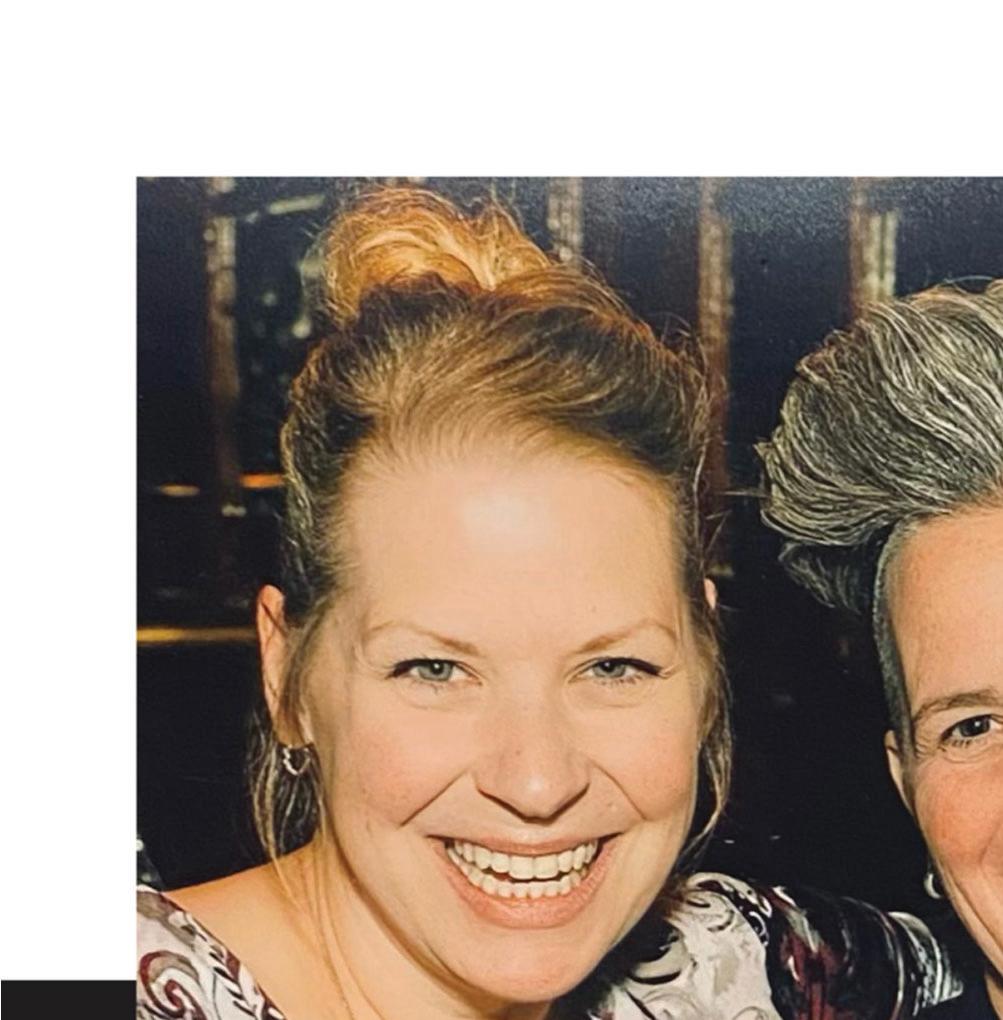







The Republican National Convention was a weeklong cacophony of incoherency as members of the new Republican Party attempted to dispense individualistic interpretations of “unity.” The quadrennial event, which draws delegates from across the country, should have captivated news conversations throughout July; however, it was quickly eclipsed by a series of unprecedented developments bookending the four-day convention.
Just two days before the RNC was set to kick off, former president and current party nominee Donald Trump narrowly escaped an assassination attempt. The Sunday following the convention, President Biden announced that he will suspend his campaign for reelection, endorsing his vice president, Kamala Harris, as the next nominee for the Democratic Party.
Assassination attempt
While speaking at a rally in Butler, Pennsylvania, on July 17, a gunman opened fire from the roof of a nearby building, shooting a round into the crowd. A bullet grazed Trump’s right ear. The former president immediately touched his hand to the side of his face, realized it was covered in blood, and ducked to the ground. Secret Service members surrounded Trump as snipers took out the shooter. Trump stood up, blood streaking his face, to raise a fist in the air for an opportune photo before exiting the venue. While the FBI continues to search for a motive behind the shooting, it was discovered that he was a registered Republican.
Following the attack, sources close to Trump claimed that the near-death experience had inspired him to rewrite his RNC acceptance speech completely. Political analysts anticipated he would divert from the usual name-calling and fear-mongering toward a message of national unity.
Before Trump’s acceptance speech on Thursday, July 18, other prominent speakers took the stage in Milwaukee, Wisconsin, to espouse Trump’s bravery and claim divine intervention following the assassination attempt, which left one attendee dead and three others injured.
RNC speakers call for unity but take jabs
Many speakers noted that political hatred and division have gone too far. Arkansas Gov. Sarah Huckabee Sanders joined the ranks of Republicans whose calls for peace coincided with condemnation of liberals, whom they blamed as inciting the most dangerous political rhetoric. “A parent at my three-yearold son’s preschool spit on my car,” Sanders said to a stunned crowd. “My family was denied service and kicked out of a restaurant.”
Other speakers included long-time Trump supporters Gov. Kristi Noem of South Dakota (who recently made headlines for bragging about killing her dog) and US Rep. Marjorie Taylor Greene, who also encouraged Americans to embrace unity — while condemning liberals for espousing violent rhetoric, and audibly grimacing throughout her speech.
The Republican speakers were quick to evoke culture wars and tiptoed around actual policy plans. There were plenty of lowbrow

BY LINDSEY ANDERSON
jabs at the Transgender community and Gen Z from Vivek Ramaswamy, Donald Trump Jr., and Ron DeSantis, who repeated the same line that young voters “can’t even define what a woman is.”
Despite the anti-LGBTQ+ rhetoric touted on stage at the RNC, many speculate that hundreds, if not thousands, of closeted Gay men traveled to Wisconsin for the event. The Gay dating app Grindr experienced numerous crashes due to servers being overwhelmed in Wisconsin over the week. The surge in usage could be traced to burner phones.
Many Republicans who had previously opposed Trump also spoke at the convention, giving him their full endorsement. This included Nikki Haley, who campaigned against Trump in the primaries and told Fox News in February 2024, “If Donald Trump is the nominee of the Republican Party, we will have a President Kamala Harris. That’s just a fact.” Trump was also endorsed by former rival Texas Sen. Ted Cruz.

Trump received immense praise from his new vice presidential pick, JD Vance, a junior senator from Ohio, lawyer, and author. During Trump’s first campaign, Vance was an active “never Trumper,” even going so far as to call the former president “America’s Hilter.” Vance has since proclaimed a change of heart toward Trump, and he pledged his loyalty to the nominee and the Republican Party onstage.
Vance is a staunch anti-LGBTQ+ politician who has previously stated he would support overturning Obergefell v. Hodges (legalizing marriage equality) and aims to pass a nationwide abortion ban.
RNC or rock concert?
The crowd was full of supporters who matched the energy of concertgoers at a music festival. Many could be seen wearing bandages and folded-up squares of toilet paper over their right ears in solidarity with Trump, who appeared at the convention with a

large bandage on the side of his face.
The audience, ready to chant, engaged in many call-and-response activities. Some of the chants included “U-S-A,” “Yes, you should” (in response to Trump’s emotional statement that he shouldn’t be standing in front of them after his attack), and “JD’s Mom,” following a story about the VP nominee’s late mother.
The RNC also hosted a lineup of “celebrity” speakers, with little to no political experience. This included televangelist and millionaire Franklin Graham, former Fox News personality Tucker Carlson, Hulk Hogan (who ripped off his shirt in the middle of his speech), rapper and adult actress Amber Rose, and UFC President Dana White. The latter had the honor of introducing Trump to the convention, typically a position reserved for the spouse of the nominee (Melania Trump did not speak).
Following White’s emotional introduction, Trump took the stage, appearing in front of his name aglow in Broadway-style lights. While he did address the attempt on his life with uncharacteristic humility and even admitted that discussing the assassination attempt was too hard for him, Trump quickly fell right back into his name-calling, ad-hominem rhetoric for the rest of his 90-minute acceptance speech. He also brought up the 2020 election, alluding to the conspiracy he has touted over the last four years — that the results were inaccurate — saying, “The election result: we’re never going to let that happen again.”
For the most part, the RNC played into the culture wars that have stigmatized LGBTQ+ people, DEI policies, and women’s rights. There was little talk about what Trump’s actual political agenda will look like, though the details of the Republicans’ four-year plan can be found in Project 2025, a 900page document sponsored by the Heritage Foundation and written in part by members of Donald Trump’s inner circle.





BY ARUL GNANASIVAM


Today, Lance Garland will spend his time on Bainbridge Island, tending to his cats, dogs, and chickens. In his free time, he’ll write a poem or two, reflecting on the serenity, the quietness. Fast forward a few weeks, and Garland will be atop the Matterhorn, one of the highest peaks in Europe. Along with his team of mountaineers and photographers, Garland will blaze a trail for Queer climbers everywhere in an expedition that begins began on July 19 and is expected to wrap up on August 5.
And yet it won’t be the first time he has paved a new path for others — outside of climbing and writing, Garland is the first openly Gay firefighter in the history of the Seattle Fire Department.
He grew up in Federal Way, Washington, served in the Navy, and then studied creative writing at the University of Washington. After graduation, he simultaneously started two careers: as a firefighter and as a writer. Although the two seem unrelated, he finds a strong purpose in both careers.
“Writing is a way to try and give back, especially to the Gay community,” Garland said. “I try to focus on writing that fills a hole that wasn’t previously filled, kind of like in firefighting.”
Pushing through barriers
Garland’s job as a firefighter came with its hurdles.
“It’s harder automatically if you’re the only one,” Garland said. “You have all these questions, like ‘Is it safe? Will it go well? Is this going to be a negative for me?’”
Yet despite his doubts, he was supported in his firefighting career.
“I would never have felt comfortable being a firefighter without the support of my community, Cap Hill, and the city of Seattle,” Garland said. “I fought for marriage equality here. I remember we all went to St. Mark’s Cathedral on North Capitol Hill and had our big first meeting to try and make Washington State approve marriage equality.”
Even before pushing through barriers as a firefighter, Garland faced adversity. He served in the Navy during Don’t Ask, Don’t Tell, a hypocritical 1993 Defense Department policy that allowed Lesbian and Gay people to serve in the military but forbade them from making their sexual orientation publicly known.
“I faced some big challenges during that time,” Garland said. “You have really negative side effects of being honest.”
Despite feeling similar pressure to be quiet about himself as a firefighter, Garland

refused to hide the fact that he was Gay.
“I wanted to be visible so that other people could see, ‘Oh look, it’s fine. This is great,’” Garland said. “Everybody has their own challenges but this isn’t something that can’t be done.”
Garland has felt the same isolation in the climbing community — one of the driving factors behind his journey as a mountaineer and his upcoming expedition to the Matterhorn.
“I was always the only Gay guy around when climbing, and I’m like ‘Do other Gay guys climb?’”, he said.
Queer climbers connect
For his expedition proposal, titled “Beyond the False Summit: A Matterhorn Expedition to Unearth the Queer Pioneers of Alpinism,” Garland has been granted a 2024 Pathfinder Prize from Hidden Compass, an organization that gives grants to expeditions in which “discovery is about understanding instead of conquering,” according to the group’s website. During their expedition, Garland and his team will explore the history of Queer climbers in the Swiss Alps.
“There’s a very rich history of Queer climbers there,” Garland said. “That was something that was not easy to find, and


that’s how this project started.”
The expedition will bring together different Queer climbers, an important goal that Garland has focused on throughout his climbing career. Despite unique hardships and experiences, climbing connects the community, Garland believes. He describes climbing alongside an Asian American Queer woman, someone who’s had vastly different experiences than himself.
“She also has felt like the only one of her kind wherever she went,” said Garland. “This is the first time we’ve had these conversations when we’re climbing. Normally we’re all alone.”
In his experience, climbing has helped members open up and talk more freely.
“It really is a relationship, climbing,” Garland said. “How do you do this safely? How do you check your partner? It’s based on openness and communication.”
Climbing as Queer metaphor
In recent years, Garland has seen huge milestones made in the Queer movement and not only in climbing.
“For me personally, it was the [2010] Don’t Ask, Don’t Tell repeal,” Garland said. “I feel like that was when the nation really started to get serious about, ‘Are we going to give Queer people equal rights or not?’”
Despite the progress, Garland acknowledged his own privilege and the work that needs to be done.
“I’m a cisgendered, white Gay man, so life is obviously easier for me than a Trans person,” Garland said. “I see some of the same issues [in the Trans community] that I was dealing with 20 years ago happening right now, and the same sort of hate and judgment being spread about them.”
Nevertheless, the future looks bright.
“When I go to Queer ascents in California, I’m hanging out with the next generation of Queer people,” Garland said. “They don’t have the same baggage I have, the negative stuff I had to see. They’re looking at the world as wide open for them.”
As we ended our conversation, Garland reflected on how climbing is analogous to the Queer experience.
“So often, [in] our lives as Queer people, we’re just reaching out, trying to find something stable and sure to keep us safe,” Garland said. “We need the person on the end of the rope to keep us safe.”
“We’re tied to our partners in the community for survival,” Garland said. “We get further and go higher when we’re doing it together.”

BY HANNAH SAUNDERS


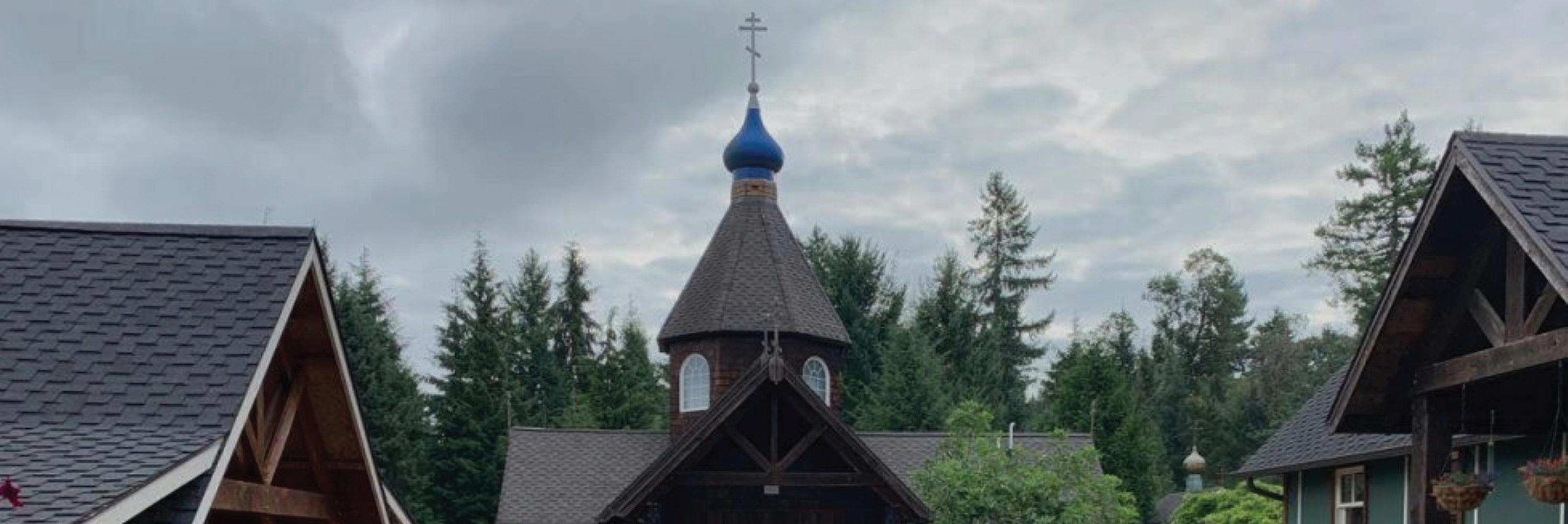
Vashon Island’s LGBTQ+ residents and allies remain united after the head of a local Russian Orthodox monastery, the All-Merciful Savior Monastery, spent the early weeks of June filming identifiable residences that displayed Pride flags, all while he cited Bible verses as voiceover.
The Vashon Beachcomber’s Elizabeth Shepherd broke the news that Abbot Tryphon had posted a YouTube video showing Pride flags above the Vashon Center for the Arts and on private properties.
“The fear of the Lord is to hate evil; pride and arrogance and the evil way and the perverse mouth I hate,” Tryphon said in the video, which was filmed from the window of a slowly moving car. “Everyone proud in heart is an abomination to the Lord; though they join forces, none will go unpunished.”
Shepherd reported that the second video Tryphon uploaded had a picture of him in front of a Pride flag with text that said “The Source of All Evil” in large red letters. The videos have since been removed from YouTube, but according to the Beachcomber, Tryphon noted he had seen “more Pride flags and Gay flags than American flags,” and he claimed that a “dark and diabolical” new religion had officially replaced Christianity in the US.
“This incident is a booster shot to our community,” one member of Not On Our
Island, told the SGN. “It woke us up.” Not On Our Island formed shortly after Tryphon’s videos went viral, and it works to make Vashon Island a safer and more welcoming place for all.
“When we first got together with a small group, one of the people there pointed us to Not In Our Town, and we decided that would be a great model,” the member said, referring to a movement that focuses on putting an end to hate, racism, and bullying while building safe and inclusive communities for everyone.
NOOI focuses on “inclusivity and kindness — all the good mushy stuff,” the member said. The group has held three meetings since its June formation, and 46 people have attended one or more events.
“We set up a landing page . . . to date we’ve received 146 messages, with some people saying they’re supporting allyship,” the NOOI member said, adding that last month they heard from many community members who were upset about Tryphon’s actions.
The NOOI member said Tryphon’s actions brought up concerns from members of other marginalized groups, and many allies attended the first meeting.
Tryphon apologizes
Tryphon posted an apology video to his YouTube page, in which he said his actions have obviously hurt people on
Vashon Island, and that his intent was not to personally attack or point fingers at anyone.
“It was a mistake on my part to take video footage or photographs of people’s private property. Again, this was not meant as some sort of public embarrassment or humiliation or calling out of any individual, and it certainly was not fueled by any personal animosity or hatred of any one individual,” Tryphon said in the apology video. “I apologize for this lapse in judgment on my part.”
In the video, Tryphon explained that he wasn’t trying to justify his actions, but rather asking the community for forgiveness.
The SGN reached out to the monastery, but Tryphon is currently recovering from surgery and was unable to speak. Another monk, who refused to provide his name to the SGN, said that Tryphon’s apology was not taken well as people accused him of being insincere.
“Not everybody who is Homosexual, Queer . . . disagreed with Father Tryphon. There were some that were sort of upset by it, and others who were not,” the monk told the SGN, adding that many people were upset by how Tryphon’s actions were blown out of proportion.
“There wasn’t any attempt to sit down and talk. He said something, he published this, and then the reaction was sort of
turned into a political rally and there wasn’t anything involved whatsoever, and not everybody was basically on the same page — both Queer community and not, [it] was turned into a political rally type thing,” the monk said. “Things like this happen sometimes, what can you do?”
NOOI will continue to hold community meetings. Local artist West McLean designed NOOI posters that have been distributed and are now hanging in 36 businesses. The NOOI member said another 83 posters were picked up by individuals to hang at their homes, with Vashon Print and Design offering them at a cost.
The group is working to set up a showing of the original Not In Our Town documentary at the local theater, and are planning a nonviolent communication event — in collaboration with other organizations — with a certified nonviolent communication speaker. The event, titled Connecting Across Differences, will be produced by Vashon Center for the Arts and is slated for September 2025.
NOOI encourages Vashon residents to become involved by purchasing an NOOI poster and placing it in a prominent setting in a home, business, or organization, and by attending the next NOOI meeting.
To show support for NOOI, visit www. notonourisland.org.
BY HANNAH SAUNDERS
Photographer Brittany Rose Bradley is rolling her mobile darkroom, nicknamed Ruby, through the Pacific Northwest this summer to capture the diverse roller derby community on film. Instead of using a digital camera, or even an ordinary analog one, Bradley, a roller derby player herself, will use what’s called alternative process photography. For this project, entitled Jamnesia, Bradley has chosen something called the wet plate collodion process, which originated in the 1850s.
“It just made sense — the crossover between roller derby and the type of photography I’m using, and my own personal philosophy and practice really, really meshed well,” Bradley told the SGN
To accurately reflect the diversity of the roller derby community, Bradley knew she had to capture skaters from all over. She will travel from California to Oregon, Washington, and Idaho between August 11 and August 23.
“I started to make connections with teams in other states, and I had enough players — groups — in different areas that it just made sense to start chunking it out into road trips,” Bradley said. “The Pacific Northwest is a huge leg of the project, but it’s not the only one.” She also has plans to travel to Hawaii in September.
The wet collodion process requires
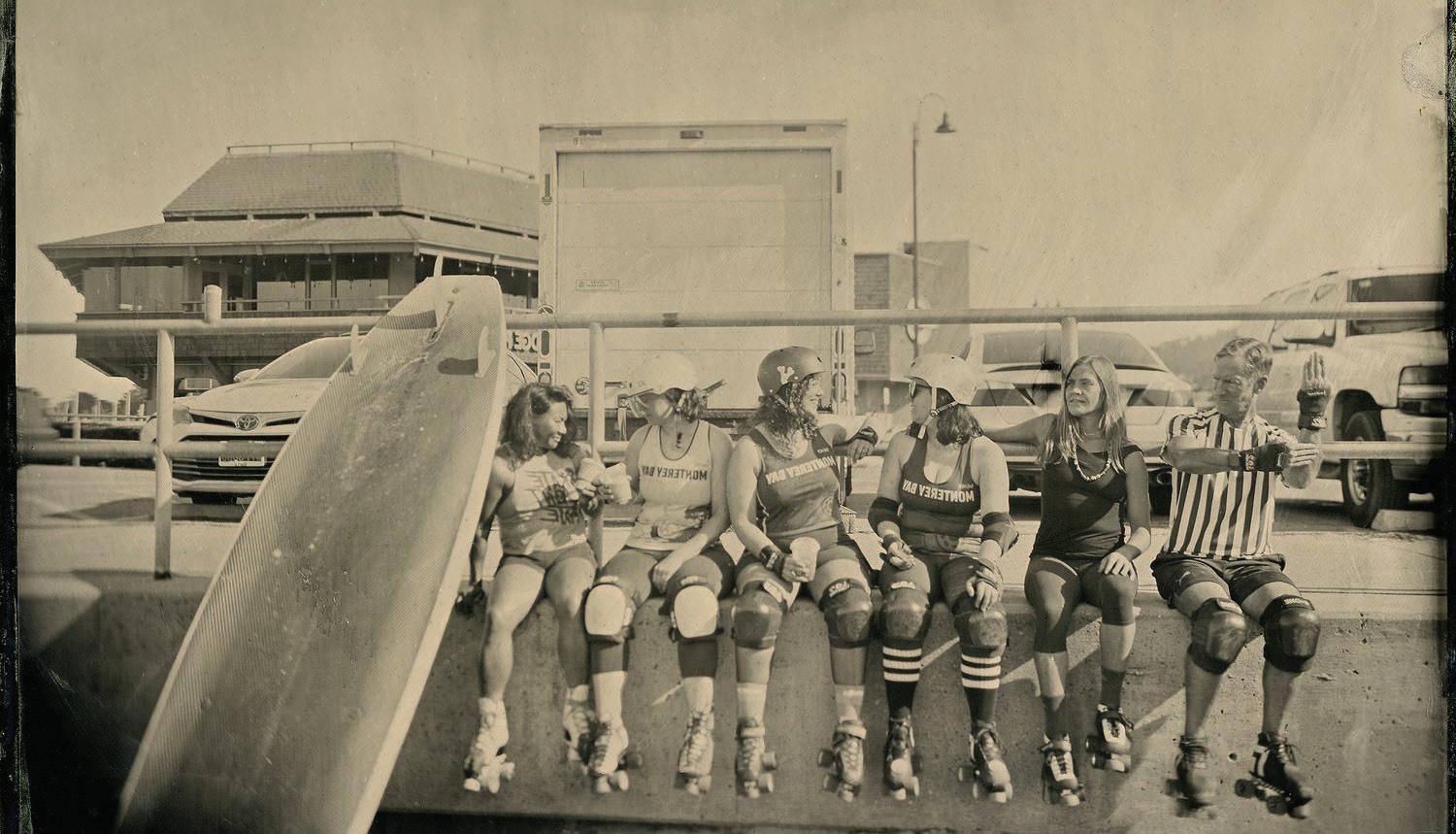
Bradley to develop her images very soon after she shoots them. She coats a glass plate — the “film” — with a concoction of a soluble iodide and a cellulose nitrate solution known as collodion. Speed is of the essence; if the plate is allowed to dry, it becomes waterproof and unable to react to the darkroom chemicals. “I need to be able to develop photographs on site,” said Bradley, “so I have a mobile darkroom I’ll be taking with me.”
The project is a chance for Bradley to reclaim wet collodion photography, which was used in the past to document minoritized people. “The format I’m
PHOTO BY BRITTANY ROSE BRADLEY
using really was used to contribute to the ‘othering’ of people,” Bradley said, adding that historically there have been so few images that adequately represent people of color and the LGBTQ+ community that they are “almost nonexistent.” Therefore, said Bradley, “It made perfect sense for me to use this medium to re-maturate history a little bit.”
Bradley sees this road trip adventure as an exciting opportunity to mingle with fellow skaters. “Each team has their own flavor. I’m already seeing that in basic communications and how they want to represent themselves.”
While there are areas for improvement, Bradley said the roller derby community seems to be highly welcoming, wit h many players identifying as LGBTQ+ and Two-Spirit. She said each team has the opportunity to welcome skaters of all genders, sexual identities, and race or ethnicity, and she has personally seen an increase in the number of skaters of color.
“Being Bisexual, at least for me and from my experiences, creates a unique dichotomy of how I look at the world,” Bradley said. In her view, Bisexual, Pansexual, and Omnisexual people tend to operate in spaces differently from others in the LGBTQ+ community; for example, they might be in heterosexualpassing relationships, which allows them to see darker sides of homophobia. In her photography, Bradley evokes as much empathy from people as possible because she herself doesn’t feel empathy in ever y space she’s in.
After completing her road trip, which includes photographing Seattle’s ver y own Rat City team, Bradley plans to create a photography book of her roller derby images and hopes to mount a n exhibit of her work.
For more information on Bradley’s work and a sneak peek at Jamnesia, see https://www.brittanyrosebradley.com/.


There was a time when Friday nights meant heading straight to Manray, a bustling Capitol Hill video bar. Capitol Hill is Seattle’s “Gayborhood,” the rainbow-studded heart and soul of the city’s LGBTQ+ life, a place where everyone is welcome — at least on the surface. These days, I don’t hit the clubs as often as I used to. As a Gay Black man, my journey through Seattle’s LGBTQ+ scene has been a mixed bag of vibrant nights and stark realizations.
Lately the scene has started to feel more like a rerun than a live show. Bars that once played top 40 hits now echo with the same house music, night after night. The diversity in music has faded, replaced by a monotony that reflects the DJ booths — predominantly white, predominantly male. The lineups and promotional flyers scream sameness, and it’s glaringly obvious to those of us who crave something different.
In this so-called progressive city, Black DJs are often sidelined. Despite their skills, they’re frequently overlooked by Capitol Hill clubs and promoters in favor of less experienced white DJs, even during major events like Pride.
Contrast this with my experiences in places like West Hollywood (WeHo). There, Black DJs are a common sight, adding layers of diversity and vibrancy to the nightlife. It’s a stark difference that leaves me questioning Seattle’s so-called inclusivity.
Aided by the insights of local Black DJs, I want to shine a light on the lack of diversity and explore potential solutions. Seattle’s Gay scene doesn’t need just a revival; it needs a revolution, grounded in true diversity and inclusion.
So let’s dive into the rich history of house music, traverse the evolution of the Seattle Gay scene, and hear directly from the Black DJs who’ve been in the trenches. Together, we can envision a nightlife that celebrates all voices and offers a truly inclusive experience.
History of Seattle gay scene
Seattle’s LGBTQ+ nightlife scene revolves around Capitol Hill, and Capitol Hill’s history is entangled with that of the Central District, a neighborhood shaped by the harsh lines of redlining and racial covenants that confined African Americans to specific areas. The Central District wasn’t
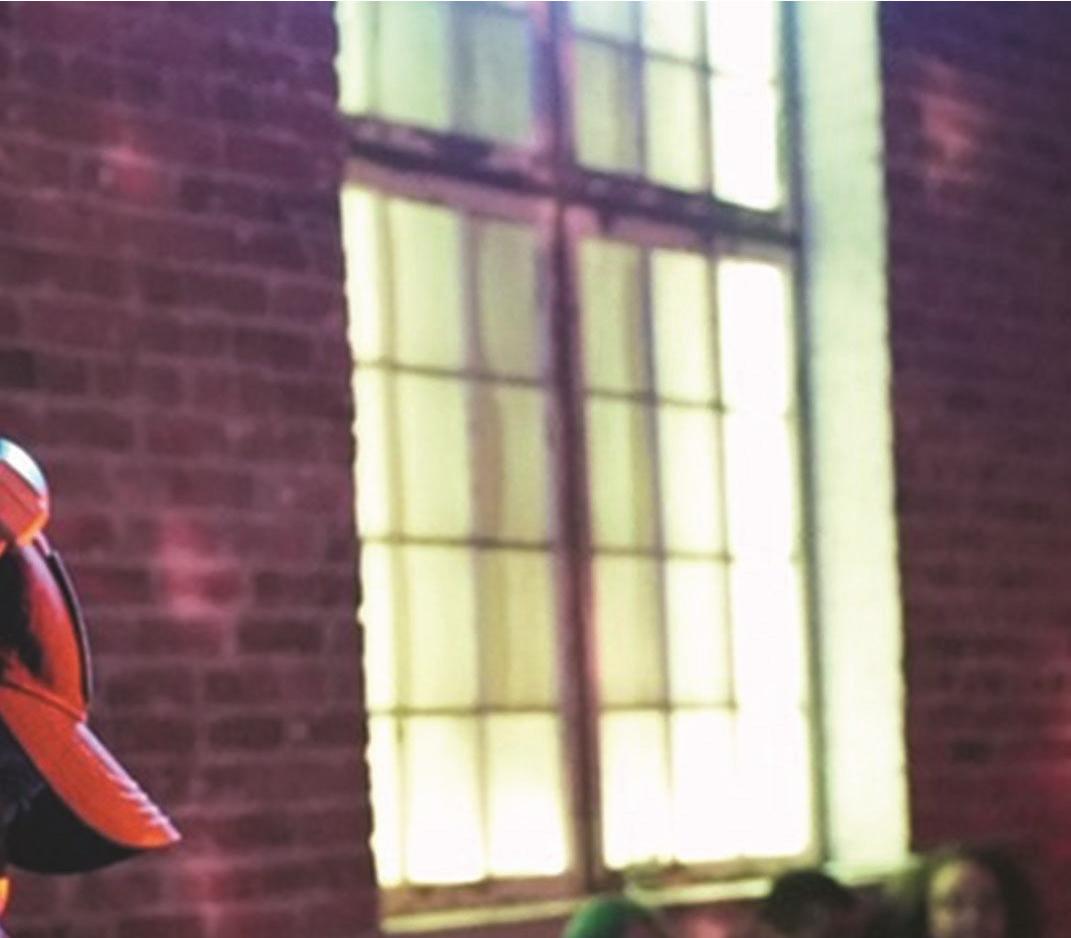

BY ALAN MOTLEY
just a neighborhood; it was a community, vibrant and resilient despite the systemic barriers. As the mid-20th century rolled in, the Central District became predominantly Black. Though forged in adversity, the community was a testament to the strength and unity of its residents.
In the 1970s, Capitol Hill was a diverse and evolving neighborhood characterized by a mix of ethnic groups, including African Americans, Asian Americans, European Americans, and Native Americans. It emerged as a hub for the LGBTQ+ community, with many individuals and organizations establishing their presence, shaping the neighborhood’s identity. The area was economically diverse, featuring a range of housing options from single-family homes to communal living spaces, reflecting its working-class and middle-class residents.
Capitol Hill also became a center for countercultural movements, attracting artists, musicians, and activists who contributed to its vibrant and progressive reputation. Urban development during this time brought new housing and commercial spaces, further shaping the neighborhood’s modern character.
In the 1980s, Capitol Hill, already known for its artistic and bohemian vibe, started to transform into a haven for the LGBTQ+
community. This period wasn’t just about finding a safe space; it was about carving out a piece of the city where people could be unapologetically themselves. Iconic venues like Neighbors Nightclub opened their doors, offering more than just a place to dance — these were sanctuaries where self-expression and acceptance reigned supreme.
Fast forward to the 1990s, and the scene was buzzing with a new energy. The AIDS crisis brought the community together in ways previously unimaginable, with organizations like the Seattle AIDS Support Group providing critical support. The era of activism wasn’t just about survival; it was about visibility and pride. More bars and clubs popped up, each one adding a unique flavor to the melting pot that is Capitol Hill. Venues like R-Place and the Cuff Complex become the beating hearts of the neighborhood, pulsating with the rhythms of house, pop, and everything in between. R-Place, in particular, was a sanctuary for people of color, a place where the music felt like home.
The new millennium arrived, and with it, the tech boom. Capitol Hill’s character started to shift as property values soared and a new wave of residents moved in. The Gay scene expanded, but not without losing some of its original grit. The annual Pride Parade



grew larger, reflecting broader acceptance and integration into mainstream culture. Yet gentrification was displacing longtime residents and altering the neighborhood’s unique cultural tapestry. Despite this, new venues emerged, and the community adapted, ever resilient.
The 2010s were a rollercoaster of progress and setbacks. Legal victories like the legalization of same-sex marriage in Washington State in 2012 were celebrated with unparalleled joy. Pride events continued to swell in size, a vibrant testament to the community’s enduring spirit. But gentrification’s shadow loomed ever larger, making it increasingly difficult for many LGBTQ+ individuals to afford living on Capitol Hill. The neighborhood’s cultural shift led to a sense of loss among some longtime residents, who lamented that the unique character of Capitol Hill was being diluted.
Then came 2020, and the world as we knew it ground to a halt. The early years of the COVID-19 pandemic shuttered bars and clubs, casting a pall over the vibrant nightlife that had defined Capitol Hill for decades.
Seattle’s Gay nightlife scene used to be a tapestry of diverse sounds and faces; today it feels like a cookie-cutter replica of itself. The recovery from the pandemic shutdowns has only amplified this trend, as bars reopened with the same old faces behind the turntables, spinning the same old playlists. But real estate prices and pandemic lockdowns are not the whole story. How has house music — a genre created by Black people — become a staple of repetitive soundscapes curated by white DJs in Seattle?
History of house music
In the late 1970s, disco was king. Clubs pulsated with infectious beats, and dance floors were packed with revelers lost in the rhythm. But like all trends, disco saw its star fade. Enter house music, a genre born from the ashes of disco’s decline and forged in the underground clubs of Chicago. It was in these dimly lit, sweaty spaces that pioneers like Black DJ Frankie Knuckles, often hailed as the “Godfather of House,” began to experiment with drum machines and synthesizers, creating a sound that was raw, hypnotic, and undeniably infectious.

Frankie Knuckles laid down the blueprint for house music while spinning at the Warehouse. The club, a sanctuary for Chicago’s marginalized communities, especially LGBTQ+ people of color, became the crucible that molded this new genre. House music was more than just a beat; it was a cultural revolution, a unifying force that brought people together on the dance floor. Tracks like “Your Love” by Frankie Knuckles and Jamie Principle became anthems, their repetitive, hypnotic beats and soulful vocals creating an immersive experience that kept dancers moving until dawn.
In the 1980s, house music spread like wildfire, jumping from Chicago to New York and eventually across the Atlantic to Europe. Artists like Black DJ Larry Levan at the Paradise Garage in New York, and the burgeoning UK rave scene, took the genre to new heights. The music evolved, but its core remained the same: a four-on-the-floor beat, synthesized basslines, and a commitment to making people dance.
House music was a testament to the power of innovation in adversity. Born from the rejection of mainstream disco, it became a global phenomenon, influencing countless other genres and maintaining a presence in clubs worldwide. It was a genre that celebrated life, love, and the freedom to be whoever you wanted to be, on and off the dance floor.
Today in Seattle, this Black art form that once played to diverse crowds now often plays in a white-oriented scene where Black DJs are overlooked. As one Black DJ laments, house music in Seattle is not being spun by “the very people that created the music.” This shift has led to house music being used as mere sonic wallpaper, stripped of its original imaginative and revolutionary spirit.
Black DJs of Seattle weigh in
To understand this issue better, I reached out to Black DJs in Seattle, friends of mine who have shared similar experiences. Due to concerns about professional repercussions, most of these DJs chose to remain anonymous. Their perspectives reveal a deep-seated frustration and highlight the systemic barriers they face in Seattle music scene.
One DJ describes the Seattle experience as being “lost until you are found,” emphasizing the fleeting nature of recognition and the struggle to maintain visibility. They note, “Being a Black DJ in Seattle is a challenge. You’re known by some and loved by some but not known by many due to the lack of opportunities. You have to truly build a brand and stick to it. You’re either lucky or you’re lost in the shuffle of hopefuls. As years pass, you can be forgotten as the attendees and music pivots.”
Another DJ critiques the post-COVID regression in diversity and inclusion efforts in Seattle, stating, “I have noticed that the DEI of the Seattle House community has taken multiple steps backward, almost to the point of segregation. Pre-COVID, there was a somewhat thriving community; I mean, not completely DEI, but headed in that direction. Post-COVID it seems the gatekeepers/
promoters/club owners and their minions decided that this scene is only for them (nonPOC artists) and not the very people that created the music that they love to listen to and play.”
Riz Rollins, a successful enough Black DJ that he didn’t mind going on record, also shared his views. Known as DJ Riz, he’s a towering figure who has long been a fixture in Seattle’s LGBTQ+ venues. His sets seamlessly transition from R&B and hip-hop to house and drum-and-bass, creating a sonic journey that defies categorization. In 1989, Chicago transplant Rollins started spinning records at Re-bar, a legendary Seattle venue, and since 1995, he has hosted the beloved “Expansions” show on KEXP. However, despite Rollins’s prominence, lately I haven’t seen him at any Gay venues during Pride or for club nights.
Asked for comment on the issue, Rollins responded to the effect that maybe I hadn’t been looking in the right places. “I was booked throughout Pride, from the Deacons [the four-DJ group the Board of Deacons] at Black and Tan [in Rainier Valley] on Friday, the last Train Car [House Party] on Saturday, the [downtown Pride] parade, [and] Wildrose.” Rollins had also been on the stage at Pride in the Park, and, billed as “the Good Reverend Riz Rollins,” at Chop Suey’s Flammable on the last day of Pride, Sunday, June 30. “The previous week I did two Juneteenth shows,” added Rollins, “followed by a set at Cascadia [Cascadia NW Music & Arts Festival].”
Rollins also reminded me, “Don’t forget the Queer women, DJs Yaddy [and] Hershe,” pointing out that DJ Hershe had played at Pride in the Park and at Seattle Center’s PrideFest.
However, Rollins did not disagree about the dearth of Black DJs in much of the Capitol Hill LGBTQ+ club scene, nor did he think his own success denied the barriers faced by other, less well-known Black DJs. “Your points are well taken,” he wrote to me, adding that “the Wildrose is the only strictly Gay bar I worked [during Pride]. My point would be, I worked while others didn’t, and Gay bars, not so much.” Of some of the more male-focused Capitol Hill Gay bars, Rollins remarked, “I confess that I don’t go into them joints and don’t have much of a desire to. I’m good [with not going], but I recognize others aren’t.” He would be open to playing more of a role in the Capitol Hill scene: he has recently been offered a booking at CC’s Seattle, and he says, “I think the Deacons could fit well at Massive or Union Bar (although [I’ve] never been to there).”
These voices collectively underscore a critical point: the battle for true inclusion and representation in Seattle’s music scene is far from over. The systemic barriers that keep Black DJs on the periphery are deeply entrenched and require concerted, ongoing efforts to dismantle. The experiences shared here are a powerful testament to the resilience and determination of these artists and a call to action for all of us to do better.
Lack of diversity among promoters and club owners
Promoters and club owners hold

significant power in shaping the music scene. They are the gatekeepers who decide which DJs get booked, which events get promoted, and ultimately, which sounds define the nightlife. Their decisions impact not only the music that gets played but also the cultural and social dynamics of the scene.
Seattle’s lack of diversity among promoters and club owners has profound implications. These roles are predominantly occupied by white, cisgender men, which influences the opportunities available to DJs of color. This homogeneity at the top creates a narrow lens through which talent is evaluated and booked, often leading to a scene that lacks the richness and variety that diversity brings.
The role of promoters and club owners goes beyond just booking acts; they set the tone for the inclusivity (or lack thereof) within the nightlife community. When the people making these decisions come from similar backgrounds and perspectives, it can result in a music scene that feels exclusive rather than inclusive. This not only limits the diversity of the music played but also affects who feels welcome and represented in these spaces.
The lack of diversity in these positions can perpetuate a cycle where DJs of color struggle to break into the scene. Without diverse promoters and club owners who understand and value their unique contributions, these DJs often face barriers that their white counterparts do not. This can include fewer booking opportunities, less promotion, and a general lack of support and mentorship.
Moreover, the absence of diverse voices in decision-making roles means that the specific challenges faced by DJs of color may not be fully understood or addressed. For example, issues related to racial bias, cultural appropriation, and tokenism are less likely to be tackled if the leadership lacks personal experience with these problems.
The impact is not just felt by DJs but by the audience as well. A nightlife scene that fails to represent and celebrate diverse cultures risks alienating a significant portion of the community. It sends a message that certain voices and experiences are less valued, which can diminish the overall vibrancy and inclusiveness of the scene.
The Black DJs I interviewed off the record cautioned against taking halfhearted measures toward inclusion, which only leads to tokenism. One DJ explained, “As a minority DJ we don’t want to be the token Black DJ on a lineup; we want to be respected by our peers and put on a lineup because of the skills we bring. The community, especially those in a position to make things happen, need to put the effort in when it comes to diversifying lineups and diversifying your circles and not just do it when everyone is complaining about it.”
To create a truly inclusive and dynamic music scene, it is crucial to address the lack of diversity among promoters and club owners. This involves not only recognizing the problem but also taking concrete steps to diversify these roles. This could include mentorship programs for aspiring promoters and club owners from underrepresented backgrounds, conscious efforts to book a
wider range of DJs, and creating platforms for diverse voices to be heard and respected.
In essence, the diversity of promoters and club owners is key to fostering a music scene that is reflective of the community’s richness and variety. It opens up opportunities for DJs of color, enriches the cultural landscape, and ensures that the music scene remains vibrant, inclusive, and representative of all its members. By actively working towards a more diverse leadership, we can break down the barriers that have long hindered true equity in the music industry.
Benefits of including black DJs
Embracing diversity and inclusion within the Seattle music scene, particularly by ensuring that Black DJs have equal opportunities, brings significant benefits not just for the artists, but for the entire community.
Black DJs are the torchbearers of a rich musical heritage. House music itself was born from the creativity and struggles of Black artists. Including these DJs honors the origins of the genre and keeps its authentic spirit alive. Their presence brings a fresh perspective and innovative sounds to the decks, evolving the music scene and introducing new styles and genres that keep the audience engaged and excited.
Moreover, Black DJs often have deep roots within their communities. Their inclusion fosters a sense of belonging and representation, encouraging more diverse audiences to participate in the nightlife. This inclusivity strengthens community bonds and enhances the cultural fabric of the scene. It’s more than just music; it’s about creating a space where everyone feels seen and heard.
The economic impact cannot be understated. Diversity attracts a wider audience, leading to increased patronage and economic benefits for clubs and promoters. A vibrant, inclusive scene draws in more visitors and creates a dynamic, thriving nightlife. It’s a win-win for everyone involved.
There is also a vast pool of untapped talent among Black DJs. By providing equal opportunities, the music scene can benefit from the skills and creativity of these artists, elevating the overall quality and diversity of performances. The richness and variety they bring can inspire new trends and keep the scene vibrant and relevant.
Inclusion is not just about fairness; it’s about social justice and equity. Addressing historical and systemic inequalities in the music industry promotes fairness, respect, and recognition for artists who have long been marginalized. It’s a step towards building a more just and equitable society. Seattle’s music scene thrives on diversity. By actively supporting and including Black DJs, we honor the music’s roots, foster innovation, and build a more vibrant and inclusive community. It’s not just about doing what’s right; it’s about enriching the cultural experience for everyone involved. Let’s commit to creating spaces where all DJs, regardless of their background, feel valued and included. Only then can we truly honor the spirit of house music — a genre born from the need for a safe, inclusive space for all.
BY LINDSEY ANDERSON

Even before the crowds arrived to fill in the blocks from Broadway and Pike to 12th Avenue on Friday, July 19, Daydreamstate, the organization behind the Capitol Hill Block Party, was preparing arrangements to ensure the safety of all participants. The festival capped ticket sales for Friday night at 10,000 so as to stay under the 14,000 limit placed on the block by the Seattle Fire Department.
Organizers anticipated a big crowd, especially for Friday night, and increased security to nearly 100 staff members after a shooting left one person dead at the 2023 Block Party.

scene: Chappell Roan.
When CHBP booked Roan, she was rising to stardom on TikTok and opening concerts in the Midwest for Olivia Rodrigo. Her songs “Casual” and “Pink Pony Club'' became well known among young, female, and LGBTQ+ demographics on the app.
“I discovered her when she released ‘Naked in Manhattan’ and I was like, ‘Oh my god, Queer girlie coming of age?!’ and then she dropped ‘My Kink Is Karma,’ and it reignited my Sapphic hatred for my ex and then it was over,” one fan, Bee, said. “Everything she’s released since has fucking slapped. It’s just banger after banger. I love her energy.”
Today, Chappell Roan is one of the biggest names in the pop scene. Her latest release, “Good Luck, Babe,” has remained on the Billboard Top Ten for the last month and reached over a million streams on Spotify. In less than a year, she’s gone from an opening act to selling out stadiums. Her hyperfeminine “Midwestern Princess” style appeals to fans who embraced 2023’s Barbie summer and the Eras tour with glittery pink cowboy hats and knee-high boots.
However, unlike much of last year’s hype around Barbie and Taylor Swift, Roan brings something new to the culture: she’s unapologetically Queer.
Roan is outspoken about being a Lesbian. Most of her songs, including “Naked in Manhattan,” and “Red Wine Supernova,” which she performed at CHBP, are exclusively written about women. She has also spoken out about her on-stage persona, which draws inspiration from drag. Her flamboyant outfits; long, curly red hair; and exaggerated makeup looks were intentionally created to mirror drag culture. On her current US tour, Roan has also worked to highlight local drag performers by bringing some out on stage with her. In Seattle, she brought up Sasha Colby during her performance of “Pink Pony Club,” interpreted by many fans as an ode to drag.
Queer artists thrive at CHBP
Sarah bought three-day tickets for CHBP and said they were most excited to see headliners Chappell Roan, Elderbrook, and Kaytranada. They traveled eight hours, taking a ferry and a car to Capitol Hill. “I enjoy the
vibes they create, especially Chappell,” they said of their favorite headliners. “Having a Lesbian artist, especially in the forefront, is so cool.”
Despite headliner Kim Petras dropping out of the festival earlier this year and the growing hype around Chappell Roan, Daydreamstate decided not to move Roan up as Friday’s main headliner. Instead, she was slated to perform ahead of Friday night’s closer, Remi Wolf.
On the festival’s first day, several amazing acts took the main stage, including Them, Mind Chatter, and Becky Hill. Other acts, like Annie DiRusso, Jayden Grayson, and Mold Mom, performed on the Neumos, Coke Studio, and Barboza stages, which lined the block. Fans sang along and cheered for all the acts; some even participated by dancing along to DiRusso’s cover of “Apples” by
Charlie XCX. However, even hours before she was slated to arrive, it was clear the bulk of Friday’s crowd was in attendance for Roan.
Welcome to the Pink Pony Club
Chappell Roan has posted “themes” to her social media accounts, encouraging fans to dress up for her shows. Previous ones included “Slumber Party” to go with her song “Naked in Manhattan” and “Space” to go with “Super Graphic Ultra Modern Girl.” According to her social media, her CHBP show theme was “Pink Pony Club.” Many fans showed up in creative homemade outfits. Hazel decorated a cake hat, inspired by her favorite music video. “I watched the ‘My Kink Is Karma’ music video. I saw a cake, and in my brain, I saw a hat. I made the boots, and the rest I got from Goodwill,” she said of her outfit.

“I came here with my friend, Trisha, and it’s Pink Pony themed, so we just put it together,” another fan, Ash Cameron, said of her outfit, which included friendship bracelet sunglasses and pink nails. Like most fans, Cameron was at the festival to see Roan. “I think she’s unapologetically herself, she’s very relatable and genuine, and she makes me feel like I’m a part of the community,” she said.
Earlier mainstage shows, such as Becky Hill and Them, were filled with crowds of fans in pink cowboy hats. Though many were in attendance for the previous shows, they also expressed excitement to stake out a spot for Roan’s 8:45 performance. Some attendees shared that they had purchased three-day VIP passes to the festival with the sole intent of catching Chappell Roan’s performance.
A historic crowd
When it came time for Roan to perform her set, the adoring crowd stretched back three blocks, from Broadway to 12th Avenue. Fans were pushed in, shoulder to shoulder, packed like sardines. Attendees at the front of the crowd, like Ysabel Utterback, reported staking spots for nearly eight hours.
“We got here early,” they said. “We went from bag check straight to the barrier. I was here for Them right from the start. They went to my high school, and I loved them so much. The entire set was so good, but Chappell Roan was amazing.”
Those who couldn’t score a ticket to the block party lined the streets just outside the security entrances. Others climbed to the roofs of nearby buildings and crowded into upper apartment windows to catch a glimpse of the Midwest Princess. At one point, over 200 people outside the 76 gas station began chanting and teasing security. In a TikTok video, fans are heard proclaiming that they would storm the gates. The SGN reached out to Capitol Hill Block Party security regarding this issue, but they declined to comment.
Inside the gates, eager fans pushed and shoved to try and get a closer look at Chappell Roan as she took to the stage in an oversized green T-shirt and baggy jeans. Due to the heat, she appeared without her usual drag makeup and outfit but still jumped around the stage with the wide eyes and energy of a baby rabbit. The crowd cheered as she fell to her knees to grind on the front of her guitarist and scream the final note of “My Kink Is Karma.” When it came time for her to perform her hit song “Hot To Go,” the crowd impressed Roan by knowing the dance.
“We’ve got some Gay people here,” she said with a laugh as she returned the mic to the stand to begin the song.
“Chappell Roan was amazing,” Utterback said. “She was up there just being so angelic.

I realized they had a fan on her face so it would blow her hair the whole time. She was gorgeous. She would sing her heart out, she’d be screaming these songs, and then the music would cut off at the end of her song, and then she would get up and go, ‘Thank you.’ And it was the sweetest thing ever.”
Despite the Queer joy Chappell Roan brought to Seattle with her show, there were serious safety concerns by many attendees.
“I do have to say, as some people were saying online, that yeah, she really should have been somewhere like Lumen Field or Climate Pledge, because it got scary getting out,” Utterback said.
While covering the event, two medical emergencies happened right in front of me. At one point, a group of concertgoers urgently flagged me down to alert security, as the strobing lights had triggered an epileptic episode for one of their friends.
Aside from the noise, crowd, and bright lights, the intense heat, lack of water stations, and easy access to alcohol added to the unsafe environment. Other festival-goers reported seeing people around them collapse from the heat. Many felt overwhelmed by the crowding. Seattle Fire reported having only two EMTs at CHBP on Friday night; they later dispatched a third shortly before the Chappell Roan concert began, after having to assess more emergencies than they could handle on their own.
There were a couple of water-bottle refill stations near the festival's entrances; however, access to nonalcoholic and noncaffeinated drinks was hard to find. Three hours after the block party gates opened for guests to arrive, medic stations ran out of earplugs.
“We were right by the speakers, pretty close to the front. It was really good, but it was too loud, to accommodate [all the] people,” one fan, Kelani, reported after the show. (In anticipation of the large crowd, the festival added speakers and screens stretching down Pike to accommodate those too far to see the stage.) “It was also stressful, because people were just shoving their way through,” she added.
Despite the discomfort, Kelani and her friend May said they had a good time at the concert and were excited to see other festival headliners, especially Kaytranada and Joey Valence & Bray.
While CHBP did include ADA entrances, wheelchair accessibility at the main stage was limited. As fans continued to push forward to see Chappell Roan, those in wheelchairs were crammed to the far right side of the stage. Not only did they have a limited view, but they were often blocked by overeager fans and press photographers.
Tragedy avoided despite mass exodus
After the show ended, scores of fans rushed to exit the area. Many who attended the concert reflected on the crowd’s exodus with relief that nobody was trampled, especially after a similar situation led to the death of ten fans at a Travis Scott concert at the Astro World festival in 2021. The lack of security presence and limited access to exits also caused a major concern. Many expressed their relief online following the event that no major safety issues, such as a fire or mass shooting, occurred, as the setup left thousands of people virtually trapped on Pike Street.
“It was terrifyingly, dangerously packed, and I’m glad I was as far forward as I was,
because otherwise I would’ve had a panic attack knowing the size of that crowd,” one attendee, Emma Schmuckekler, told the SGN. “The drone shots are freaky. If there was a surge, people surely would’ve died. It took me maybe an hour to get out. The space itself is just asking for a tragedy to happen. The CHBP Instagram comments are full of people who have scary stories of people around them passing out and not even hitting the ground. Medics straight up couldn't get to us.”
The lack of security was a concern for several fans. “Security wasn’t great with the medical. We saw security dancing,” Kelani recalled on Saturday.
“Yeah, it was very unserious for the throng there,” Kelani’s friend, May, added. Noticing the festival's security blunder, many took it into their own hands to keep an eye out and protect their community. “We had a lot of friends, and we made friends, so we kept making sure everyone was safe," May said.
The festival continues Friday night’s final show was reserved for Remi Wolf. While many Roan fans stayed to watch Wolf’s performance, there was a stark difference in the audience size, with most content to head out before it even began. “I left after [Chappell Roan]. I was too tired to see Remi Wolf, and the crowd crush to get out gave me a lot of anxiety,” Utterback said. “It was difficult. I was probably in that line moving to get out for 30-plus minutes, which was pretty scary, but overall it was an amazing concert. I hope she comes back.”
The final two days of the festival felt anticlimactic compared to the historic opening night. No other artists pulled in crowds that could compare to Chappell Roan, though fans were starstruck by acts like Still Woozy, who headlined Saturday night’s show.
“I loved [Still Woozy’s] concert,” said fan Alyssia. “He was so fun to watch!”
“His dancing was iconic,” her friend Mica added.
Still, nothing compared to Friday night. Those able to catch a glimpse of Chappell Roan reported that the concert felt magical. There was an unspoken understanding that this was a moment in history that may never be duplicated. “It feels like a cultural moment in time,” Roan fan Sativia said to the SGN. “‘Pink Pony Club’ was my favorite. That one hits home very well.”
“She’s just this beautiful, beautiful woman, and I was so glad she was here,” Utterback added.
For one night, a pop princess big enough to headline Lumen Field or Climate Pledge Arena filled the streets of Capitol Hill, returning CHBP to its Queer roots and igniting a femininomenon.

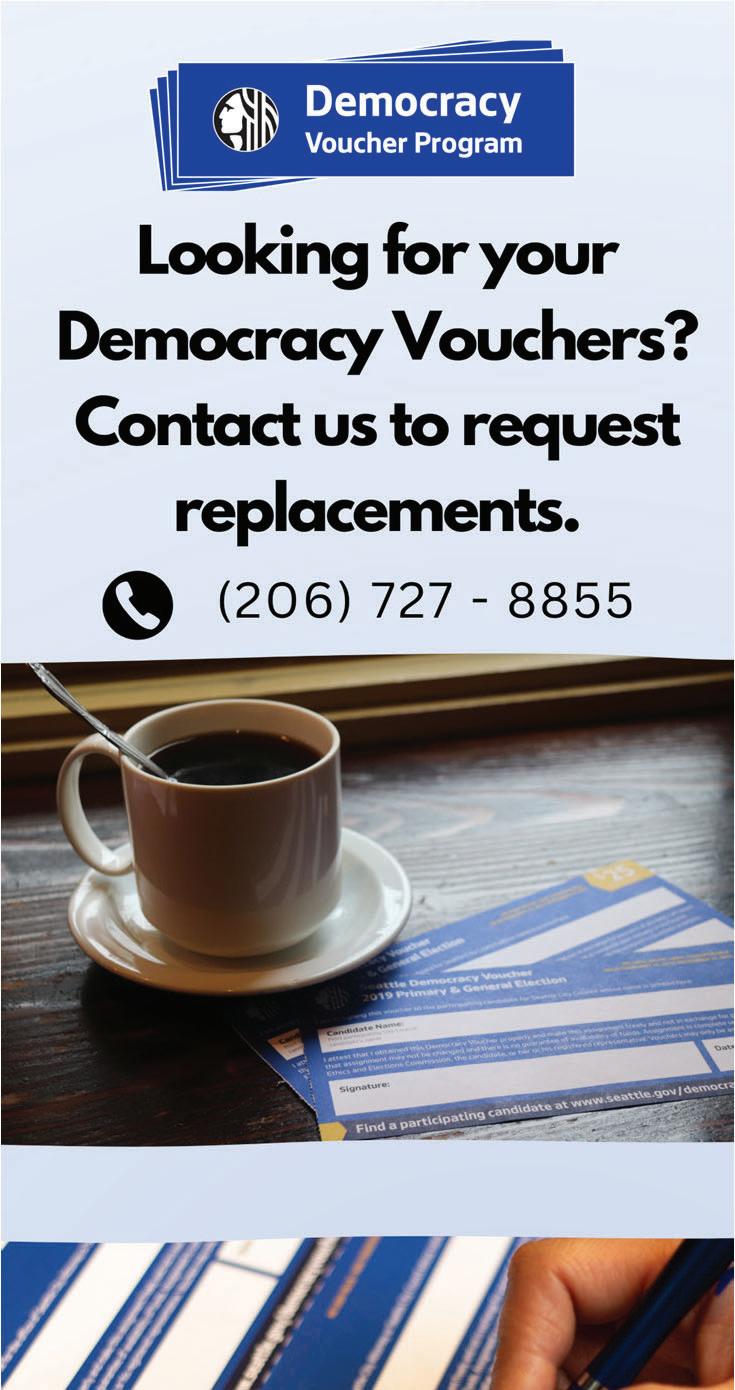
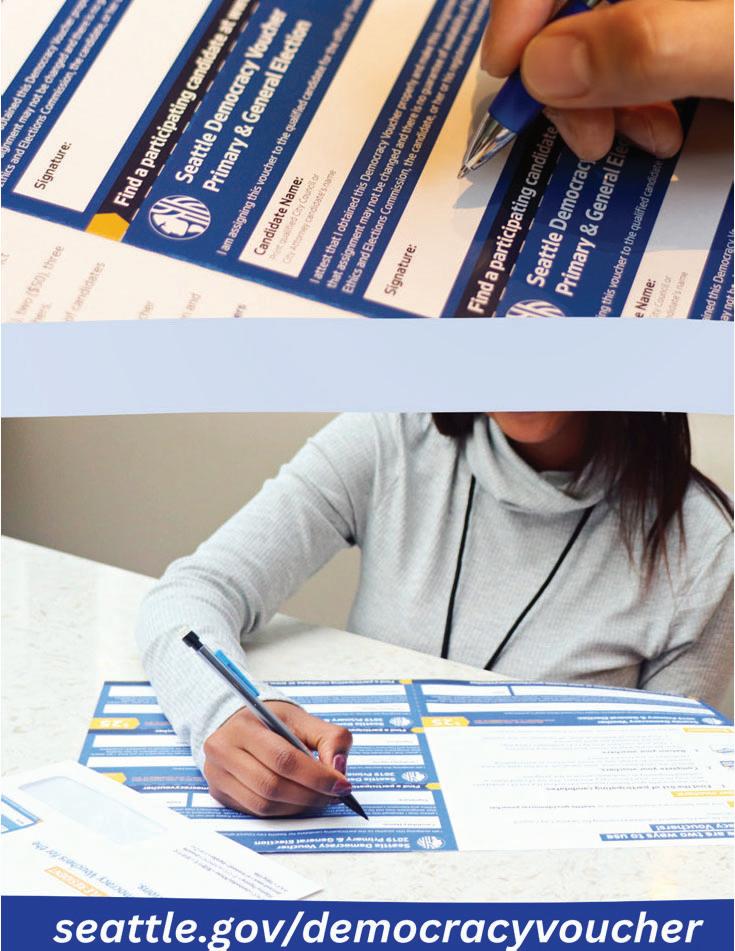








BY SARA MICHELLE FETTERS

It’s year three for the Vashon Island Film Festival (VIFF), and the president of the Vashon Film Institute Mark Mathias Sayre is ready for the audience to grab their seats. “It’s an exceptionally busy time right now,” says Mathias with a lively chuckle. “I’m very excited about it.”
The idea remains the same as it was at the festival’s inception in 2021: program major titles and award-winners from festivals from earlier in the calendar year like Cannes, Sundance, and Tribeca, showcase them at the historic Vashon Theatre, and let audiences (residents, visitors, press, guests, everyone and anyone) enjoy themselves.
“Yes,” agrees Sayre, “we’re still committed to curating notable and award-winning films, both features and shorts, from the preceding festival season. This year, we have films that won grand jury prizes at Sundance, Un Certain Regard at Cannes, took home top prizes at Tribeca, and a number that performed extraordinarily well, whether it was audience award winners or grand jury prizes or special jury prizes, at SXSW.”
And what are some of those titles? Nicholas Colia’s comedy Griffin in Summer starring Melanie Lynskey, Owen Teague, Abby Ryder Fortson, and Kathryn Newton. Cannes Film Festival Un Certain Regard awardwinner Black Dog, directed and co-written by renowned Chinese filmmaker Hu Guan. Grand Jury Prize recipient at January’s Sundance Film Festival and Golden Space Needle winner for Best Documentary at this May’s Seattle International Film Festival Porcelain War. Jane Schoenbrun’s critically lauded I Saw the TV Glow. SXSW Audience Award-winner Songs from the Hole. Those are just a few noteworthy features VIFF is bringing to the island.
“We also have a new screening section called The Local Spotlight,” adds Mathias. “We have Inheritance from local filmmaker Rachel Noel James [who stars and co-wrote the screenplay] that will be screening, as well as The Sound, which is a pilot episode of a new series focused on First Nation people. Has a supernatural thriller vibe to it, which is very cool.
“We are also going to showcase some short films that have been submitted to us from [Vashon Island] locals in a new screening section that’s kind of festival-within-thefestival called Shortcuts. It’s like a little mini competition for local shorts.”
But it’s not only about bringing a variety of cinematic confections to Vashon for a celebratory weekend in early August. Mathias also views VIFF as a showcase for the island itself, one that could inspire filmmakers to make future features there. Decker Sadowski, who’s on our jury, who was one of the stars and producers of Juniper
that was in the festival two years ago, she actually with her team just shot a new movie on the island earlier this year,” he says with pride. “It’s really awesome, because they found the island by going to the festival. They fell in love with it and then decided to shoot a movie for a million bucks [here]. You can see the success of the festival really spilling back into the local economy. It’s great.”
It’s this aspect, non-resident attendees discovering the majestic beauty and everything it has to offer, that arguably excites the Vashon Island Film Institute president the most.
“That’s probably the most exciting thing to me about the festival,” says Mathias. “It’s now become really representative of the other stuff that we want to do with the Film Institute, which can show how even celebrating indie film here is directly resulting in empowering people to make art, whether it’s film or something else in the Pacific Northwest, here on the island more specifically. That was the goal from the beginning. At the end of the day, we knew we’d be most successful if we were able to engender the creation of more art. Seeing that already starting to happen as we go into year three of the film festival? It’s super-duper exciting to me, and it puts motivation into all of us working at the Film Institute as we open up our new programs.”
Some of those new programs include the Quartermaster Lag, otherwise known as “QLab,” a collective of filmmaking programs decided to facilitate local productions, and VFIpresents, a sales, distribution, and release arm, which focuses on organizing community events outside of VIFF, such as a Night Market at the Backlot, an outdoor
space at the Vashon Theatre scheduled to take place the first Friday of each month.
“We just had our first Night Market [on July 5],” says Mathias. “Where we had a variety of vendors selling antiques, vintage clothing, and handcrafted goods. We had a DJ play, a beer and wine garden, and all sorts of leisure games. I was just so pleased, especially for what we would call probably like a beta test without a ton of marketing. People just poured in. As soon as they saw what was going on, it was just a magnet for activity. I can only imagine how much that will grow.
“And then we have more big plans. We’re talking about doing a music festival and a theater festival and all sorts of other stuff. I’m very excited for the immediate film festival, obviously, but also for everything that we have in the future at the Vashon Film Institute as well.
“I felt like we were onto something, and this community has always been such a big arts advocate. I knew if our goal was to empower artists and celebrate their art, we would have the community a hundred percent behind us and, certainly, we have been proved nothing but right on that front. Things are moving really even quicker than we probably anticipated.”
Not bad for a festival originally imagined to be a way to help a local historical movie house out when it was struggling to get back to financial viability in a post-COVID world.
“That’s really how the Institute was founded to begin with,” Mathias explains. “I had been having conversations with [Vashon Theatre owner] Eileen Wilcott. I’m friendly with them, and we knew they would probably be having difficulties coming out of the

pandemic keeping the doors open. So, the film festival’s genesis really was as a special event coming out of COVID that we thought would increase the chances that people would come to the theatre, would come back to see independent film. And it’s only grown from there.
The relationship between VFI and the Vashon Theatre now is so strong that we’re partnering on multiple different events and projects, and I think we’ve really found this synergy where they can be a home base for us for events and activities. This lets us support them to help keep the doors open and to keep the community coming to an institution that for a ton of us is seminal. I mean, both my career as a filmmaker and now as a sales agent and distributor outside of VFI, I owe to the theatre. I also own and operate The Forge, which is a motion picture sales and distribution company. I do not think I would be doing what I am had I not gone to the Vashon Theatre as a child.”
And what does Mathias envision for VIFF by the time of its 10th or 20th anniversary?
“I think in some ways we’re limited to sort of the size and scope of how big the program can be,” he candidly admits. “But we do have plans to expand to a couple of other venues where we can start putting on seminars, workshops, and lecture series during the festival, which will probably start to happen in the next few years. We’re immediately very focused on continuing to try to attract as many off-islanders and out-of-staters as possible to get respect, awareness, and exposure.
“I think, what will come with that, is you will start to see in addition to the way that we curate the greatest hits that we will start to premiere a number of movies at this festival. I think that’s where the program will grow. It’ll start to be a launchpad for filmmakers who want to say to the world, ‘We premiered at the Vashon Island Film Festival! We got in there!’ I think that will mean something inherently positive.
“Mostly, I’m just so pleased with every filmmaker that we’ve had come to the festival has had nothing but the most positive things to say to me about their experiences. To me, that’s the best metric of success you could possibly have.”
The third annual Vashon Island Film Festival will take place at the historic Vashon Theatre Aug. 8-11. Ticket holders can form a queue one hour before each screening and will be admitted at the scheduled showtime on a first-come, first-serve basis. For a full calendar of events and ticket information, go to https://vashonislandfilmfestival. ticketspice.com/viff24.









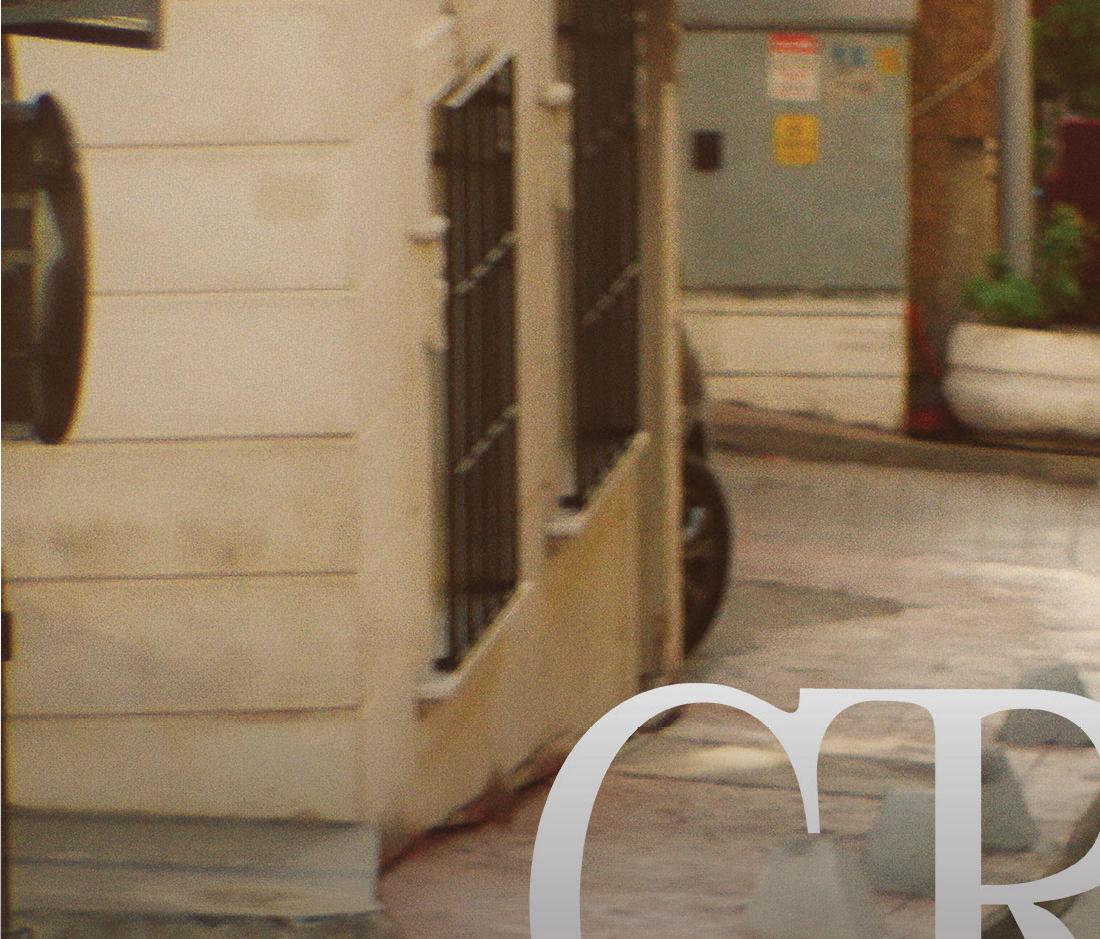
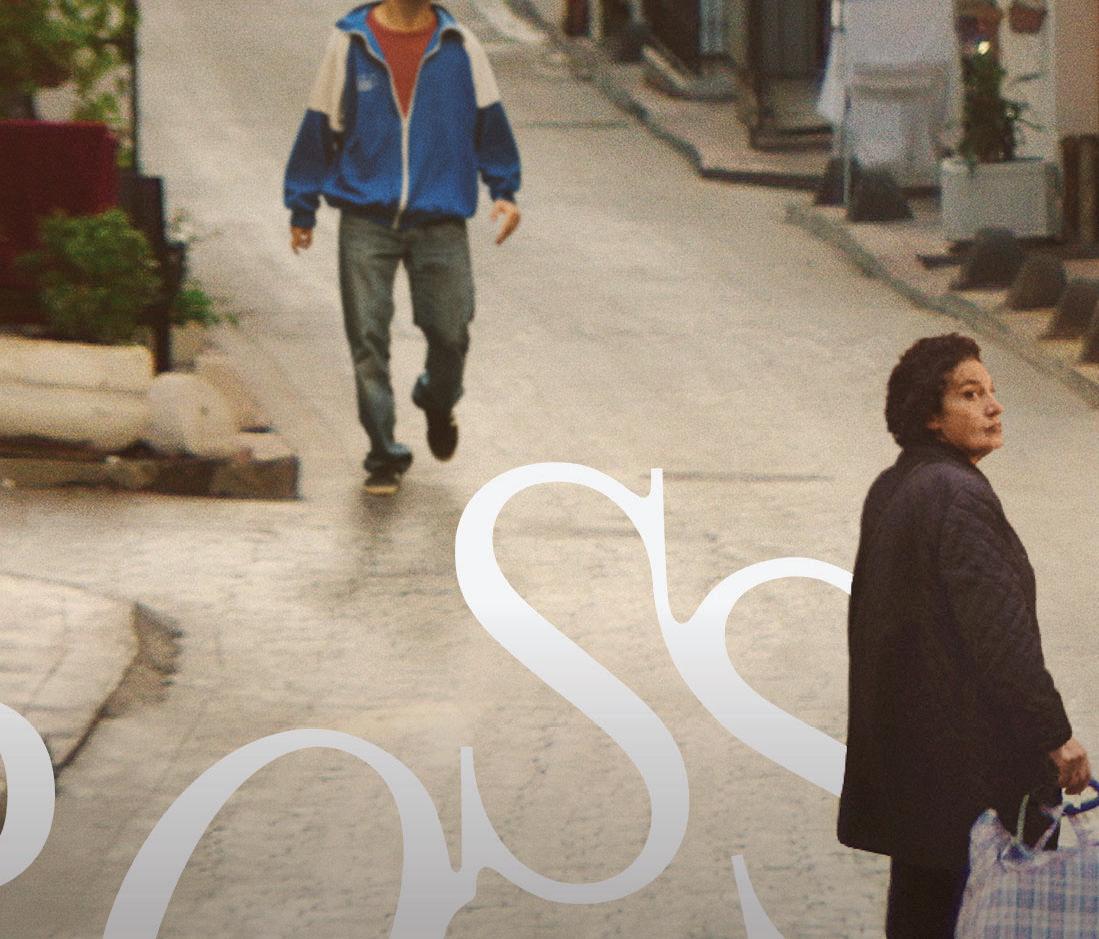

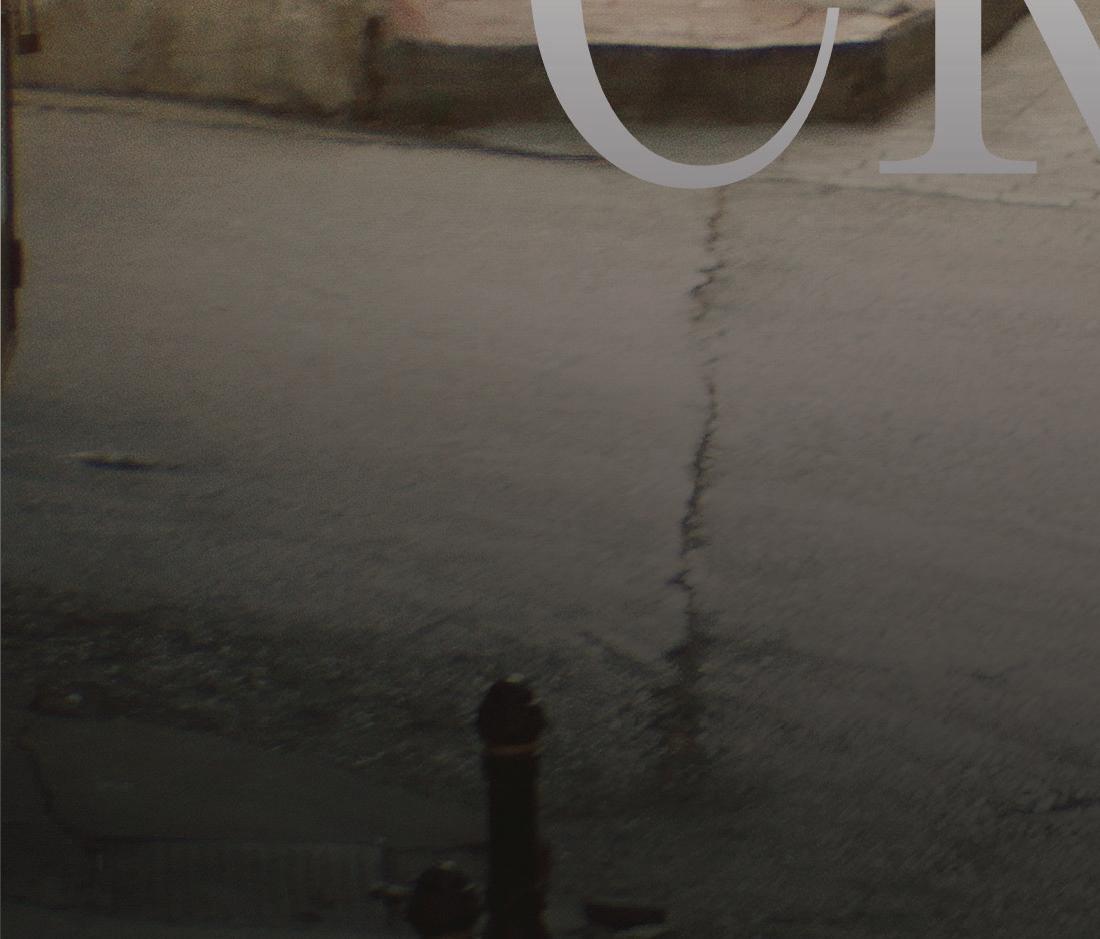
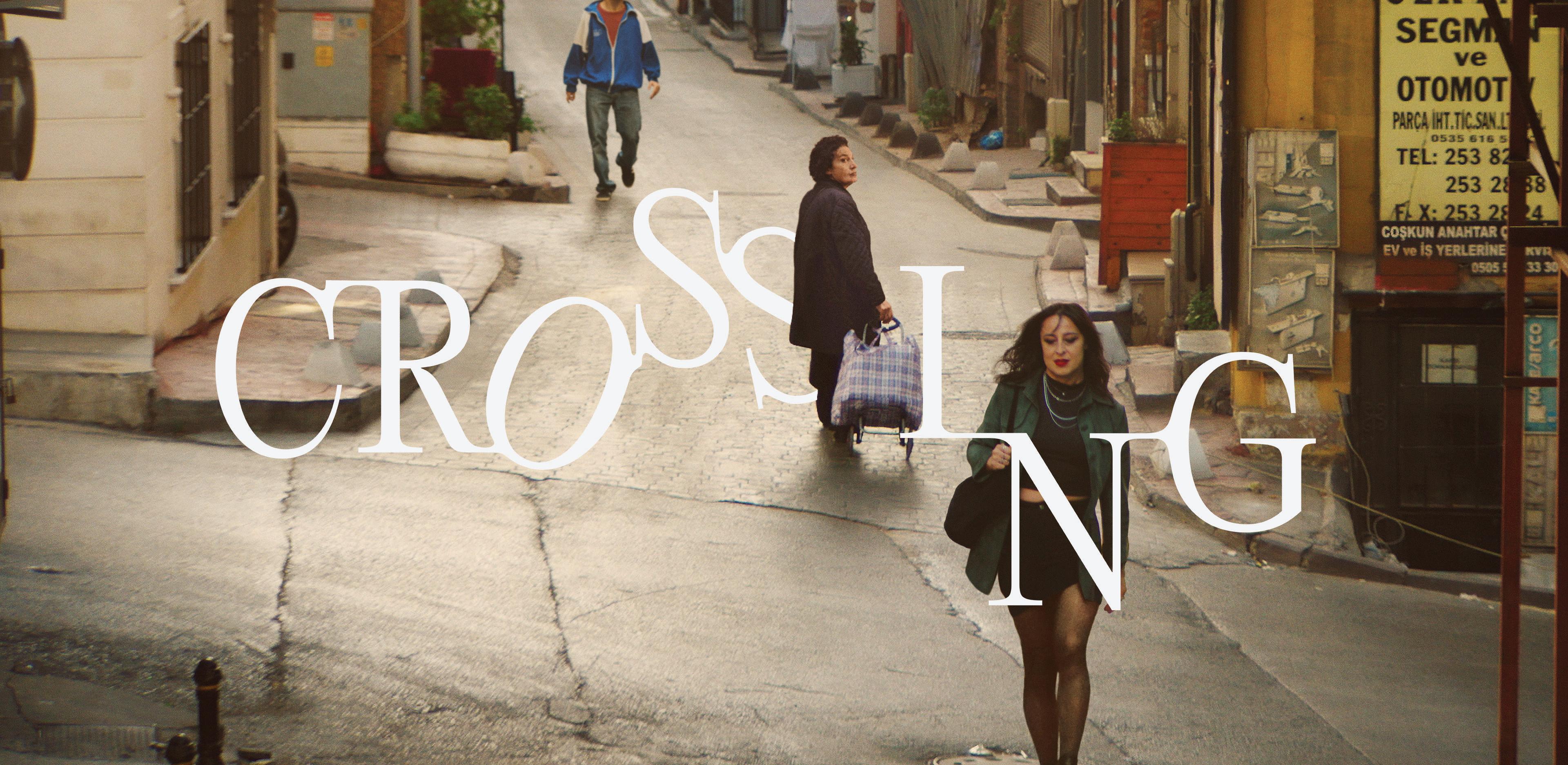
I wasn’t prepared for how hard the drama Crossing was going to hit me. The latest film from And Then We Danced writerdirector and Interview with a Vampire co-executive producer Levan Akin, Crossing has a primary narrative that concerns retired Georgian educator Lia (Mzia Arabuli), who is on a desperate search to find her estranged Transgender niece Tekla. She is joined in her quest by 20-something Achi (Lucas Kankava), a young man desperate to get away from his domineeringly patriarchal older brother. The two of them cross the border into Turkey to search the underground Trans brothels of Istanbul after it is insinuated Tekla may be there.
This in itself is abundant dramatic fodder, but Akin adds more to the meal. The final point of the narrative triangle is Evrim (Deniz Dumanli), a Turkish Transwoman who has just graduated from law school and works for a nonprofit agency attempting to protect the LGBTQIA+ community from continued oppression at the hands of politicians and the police. She encounters unfathomable obstacles in her day-to-day activities while also juggling a romantic personal life in which she is continually made to feel as if she is a deep, dark secret that needs to be kept hidden.
What’s extraordinary about Akin’s film is, as difficult as much of this may to be watch, the whole enterprise is infused with a layer of empathetic hopefulness that’s frequently shattering. All three of these characters are authentically multidimensional, and while their backstories are never truly revealed or examined in any detail, the filmmaker deftly leaves all the pieces about who they are and where they’ve come from in plain sight for the audience to easily assemble into a finished picture all on their own.
I sat down with Akin over Zoom to briefly discuss his film and the impact he hopes it may have on audiences after they’ve exited the theater. Here are the edited transcripts from our far-too-brief conversation.


BY SARA MICHELLE FETTERS
of And Then We Danced. How did that story blossom into this remarkable and devastatingly empathetic motion picture?
Levan Akin: I think it was several things. When And Then We Danced came out, there was a lot of turmoil in Georgia with that film, and a lot of discussion and debate. One of the stories that popped up in one of the newspapers was about a grandfather, and everybody was like, lo and behold, he’s 80 and he’s friends with his Trans granddaughter. Everybody was like, “How come? Why?” And he was like, “[This is] my granddaughter.”
He was so refreshing in that whole debate. [It] was such a divisive discourse and it’s super polarizing. It only helps the oppressors to differentiate people. But it’s not that black and white. The story of that grandfather was an example of that for me.
I wanted to make a movie about someone who is from the older generation and who has faced something like this. Lia starts off in the film as a woman who is on a mission to do something for her deceased sister. You can feel that she’s distanced herself to think life’s just something she has to do. Then throughout the course of the film, by meeting people face to face, she starts to come to terms with things in herself.
That was really the idea. That’s how it grew.
SMF: For the film, you have essentially three stories going on at once. While Lia and Achi start out together, pretty soon, for however briefly, they go in separate directions. Then you have Evrim, who is out there tackling a variety of problems to the best of her ability. You take all three of these characters on their own journeys until they come together at the top of the triangle by the end. How did you weave all these stories, these three characters from different worlds, so that it feels organic and natural when they do come together at the end?
LA: I loved all three of the characters. Evrim is someone who I met in different shapes and forms when I was in Istanbul doing research, and I was like, I really want to include this person who’s so resilient, so optimistic, in spite of this oppressive patriarchy that she faces. She navigates this so elegantly and with such grace. She’s just like, no, you are a bigot, I hate you, but I’m going to do my thing. She’s educating people. She’s taking her space, taking her place, and she was so inspiring to me.
Then you have this kid, Achi, who's also trying to escape patriarchy with his disgusting brother in that home. It’s so toxic.
Then you had Lia, who's on her own journey. Someone who we also feel is probably a women who didn’t want to subjugate herself to a man. She was never married. She didn’t have children.
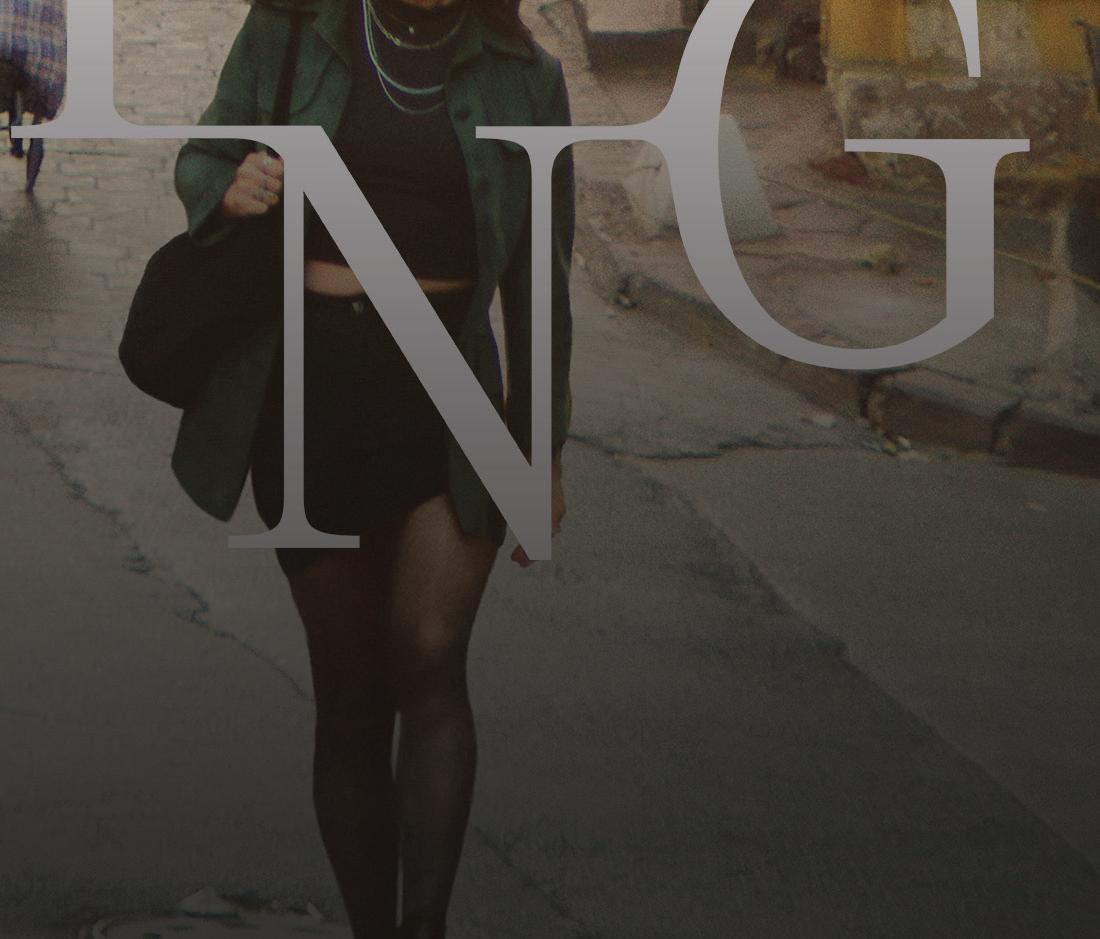
They’re all in the same problem in that they're all trying to escape. To me, that was really what united these characters. Storywise, I felt like, it’s very organic how they meet. I felt that it was very natural and I didn’t want to make it too dramatic. I’m glad it worked.
SMF: On top of all of that, you take another big risk, as the film essentially starts right in the middle of the journey for all three of these characters.
LA: Yes. That’s true.
SMF: You trust the audience to put together the pieces of what was going on for each of them before the film began.
LA: I didn’t want to set things out. It takes too long. I love movies when you’re just thrown into something. It just feels lived in and alive. You’re like, who are they? Where is she going? Why is she finding her niece? Who is this guy? And then they’re on a road trip and you’re like, okay, is this a road trip movie? But then the audience is like, no, it’s not, because suddenly you’re following someone else. I trust the audience to be smart, basically.
SMF: Watching Evrim, I feel like, internationally, universally, we can learn so much from her. How she’s facing these situations in her country right now. That hope. That resilience. In the US, we’re facing a lot of challenges right now, especially in the Trans community, especially with this upcoming Presidential election. It can feel incredibly scary. What do you think audiences can learn from Evrim?
LA: It’s so scary. Yes. I agree. But I learned a lot of lessons from Evrim. A lot of lessons. But I don’t really like talking about films in terms of lessons as I don’t want my films to feel didactic in that sense. I mean, I want people to watch the movie and just love the characters, and that’s enough.
But having said that, I think a big theme for me, with movies, and why I did this one and And Then We Danced, was that we are living in such precarious times. I feel like it’s never been darker. We’re at the edge of ruin, literally, I feel, and maybe I’m too dystopian, but that’s how I feel. So I want to show those small acts of solidarity between people. Those small moments where Evrim zips up the young kid’s jacket and she's like, “You’re going to be cold.” Or when she takes [the children] eating, because we’re all in the same boat. All of us. It doesn’t matter if you’re a doctor or if you're a garbageman, we’re all victims of capitalism, which is deeply tied to patriarchy, and there’s only a very few elite people that gain from all of us eating each other up like we’re doing. Right? That’s what I remind myself of when I write these films.

SMF: Partly because you’re willing to take this sort of approach to your stories, that you dare to showcase LGBTQ+ characters unapologetically living their lives, you’ve had to deal with some pretty extreme reactions. With And Then We Danced, you received death threats.
LA: Yes.
SMF: And then the critical and, more importantly, the audience reactions were that the film was a borderline masterpiece, which, in my opinion at least, it is. So that had to be a pretty crazy emotional rollercoaster ride for you.
LA: It was. Yes.
SMF: But it seems to me that challenge wasn’t enough for you. You yourself an even bigger one, by actually heading into some of the countries, most notably Turkey, where so many of the more aggressively ugly reactions to And Then We Danced came from. You didn’t just set Crossing in Istanbul, you also shot there.
LA: I’m too masochistic. [laughs] But I also have this obsession with spending my time in a meaningful way. I only want to do things where I can educate myself, where I learn things and meet people. I never want to be like, here’s a script, it’s a good script, let’s go out and film it. No. That’s boring. I would rather work on something else.
I want to meet people, talk to them, engage with them. We had a lot of people from the Trans community behind the camera, and that informed what we were doing. Our main casting person was a Trans man. He’s amazing. He helped us find all these women, many of whom were his friends, and they were all incredible.
Mzia Arabuli, who plays Lia, had never really met any Trans people when she started making the film. Her costume assistant was a Trans girl named Yasmine, and they became besties.
So it was a process also behind the camera. That is important for me. It can’t just be what’s happening in front of the camera. That can’t be the only, how do you say in English? Vernacular. It has to also happen within. It has to happen behind the camera, too. I think that shows in the film.
SMF: What do you want audiences to take away from the film?
LA: A lot of the theme is, when Achi asks Lia, “What would you say to her when you meet her?”, when she sees her granddaughter and we actually get to hear those words. Maybe you, someone sitting in the audience, anyone at all, need to call someone and say something nice to them, or vice-versa. That could be nice. I’d like that.















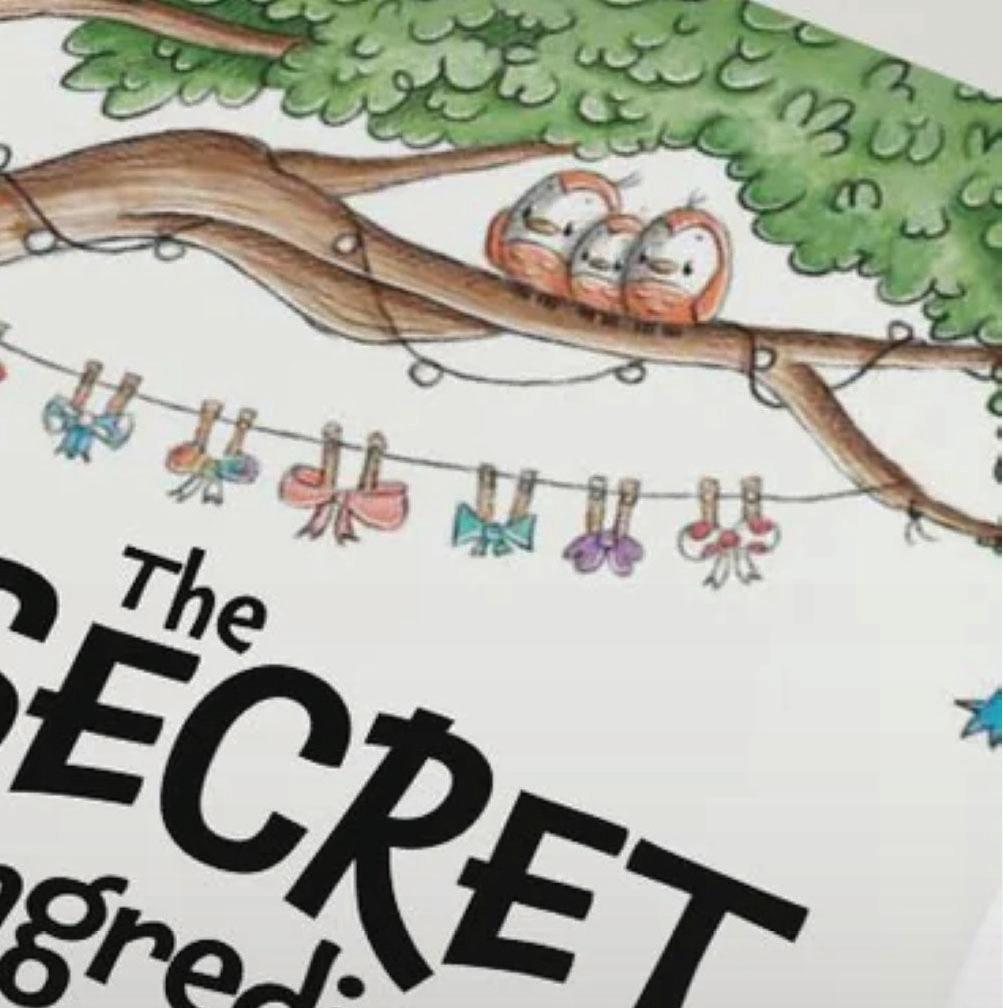
BY LINDSEY ANDERSON


Paul Castle is an author, artist, and influencer based in Seattle. Along with his husband Matt and his dog Mr. Mapel, he makes daily videos about his experiences living in the city as a legally blind person. Usually, these are cute, showing funny pranks between the couple or highlighting the many skills his trained service dog can do. Sometimes, his videos stir up controversy, like when a local (unnamed) business denied Castle entrance because he had his seeing-eye dog with him.
However, one video released earlier this summer has caused fans across the internet to express outrage.
In June, Castle shared on his TikTok page that copies of his new children’s book, The Secret Ingredient, were returned to him by a bookstore that had previously expressed its intent to sell copies. Castle posted a video in which he began crying after a text-to-speech device read the email response from the store.
“We have returned the boxes to you,” the device read aloud. “While I think your book is very charming, it’s just not something we can carry in our store at this time.” The message clarified that the person who had originally placed the order for the books was not “up to speed on the policies” of the store.
The Secret Ingredient is a sequel to Castle’s first children’s book The

Pengrooms, a story about two male penguins getting married. The sequel showed the titular Pengrooms delivering special cakes to all their friends, which included many diverse families, and ended with the couple adopting a baby penguin.
The returned books also included a box of “Pengroom” plushies.
Castle fully refunded the entire purchase and said that while he was disappointed in the experience, he did not fully fault the store: “She informed me

that my book's message did not align with the store. That hurts, but [she has] every right to make that decision, just as I have every right to create these stories.”
“I was supposed to do an in-person reading and signing, which is why they ordered so many books…,” Castle explained. “The person who initially reached out no longer works for the company, and that was when [this other person] entered the picture, and that was who sent the email to me.”
The woman who originally made
that she was a big fan of his and read his book to her son every week.
While Castle and his husband admitted to feeling “heartbroken” after the books were returned, they posted an update a week later with good news: the returned books were immediately sold to fans via online orders. “The response from all of you has been so mind-blowing and surreal. We sold out,” Castle said in his video response. “These are immediately going back out. From the bottom of my heart, I can’t thank you enough.”
The canceled book event was the third book signing Castle had scheduled for the summer. He previously sold two hundred copies to a Barnes & Noble in Seattle, where he held an event and one hundred at Charlie’s Queer Books, which also bought 50 stuffed Pengrooms.
“The books are now going to people who want them, and it just feels so right in my heart,” he said. “I truly believe stories like this are incredibly important, and after this weekend I know I’m not alone. I will cherish this memory for a very long time.”
The Secret Ingredient is now restocked and available at https://Paulcastlestudio. com, along with The Pengrooms an d original art created by the couple.
BY ALICE BLOCH
The Seattle Trans and Non-binary Choral Ensemble (STANCE) is scheduled to sing at Bumbershoot on Labor Day weekend this year, but a funding crisis might shut the chorus down before then. In June, one of the choir’s Pride concerts had to be canceled after a COVID-19 outbreak, causing the loss of much-needed income. In addition, grants have come in at lower amounts than anticipated. Haven Wilvich, the choir’s executive director, has started a GoFundMe in hopes of raising enough money to keep the choir going.
STANCE began in 2016 as the dream of Wilvich, and the choir has been performing publicly since 2022, with successful Pride and Trans Day of Remembrance concerts each year, as well as talent shows and special appearances.
The choir’s GoFundMe page (see link below) shows a good reason to offer support to this plucky group: a video recording
of True Colors, STANCE’s most recent concert. Artistic director Kaelee Alicia Bolme leads the choir through a varied and challenging program, with songs that showcase the group’s ability to handle difficult harmonies.
In the 90-plus-minute concert video, the choir sings songs in five languages, ranging from “Resignation” by Black classical composer Florence Price, to a song in Urdu by A.R. Rahman, to a highly rhythmic song in Haitian Creole, “Karnaval” by Sydney Guillaume — not to mention David Bowie’s “Space Oddity” and, of course, Cyndi Lauper’s “True Colors,” among other songs. It’s an impressive concert that shows how hard choir members have been working and how ambitious their artistic goals are.
It would be a great pity for STANCE to cease to exist. Wilvich, Bolme, and the choir’s members hope the region’s LGBTQ+ community will respond to their funding drive in great enough numbers to
keep them singing.
To support the STANCE GoFundMe, visit https://www.gofundme.com/f/ STANCEchoir.
For more information about STANCE, visit https://www.stanceseattle.org/.






